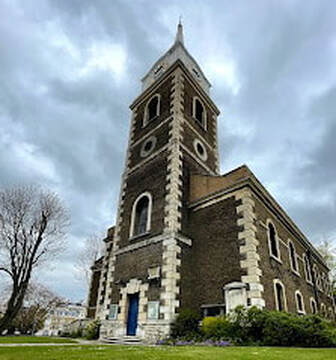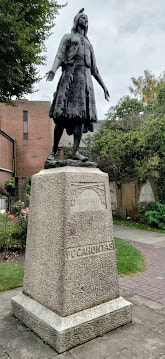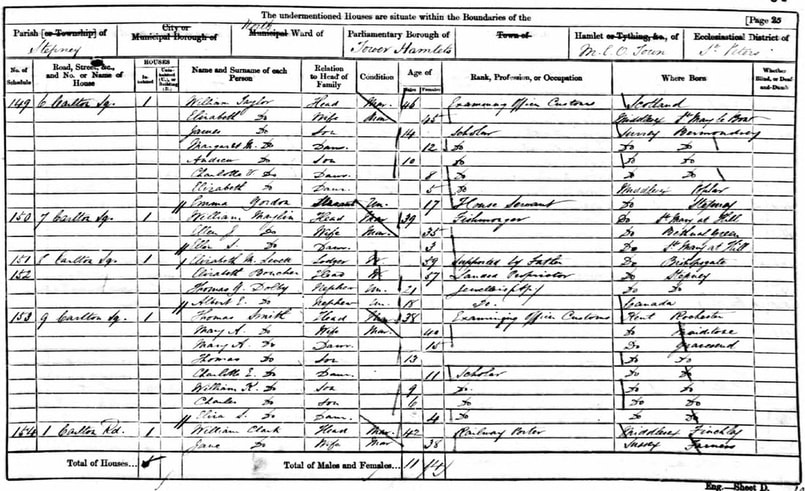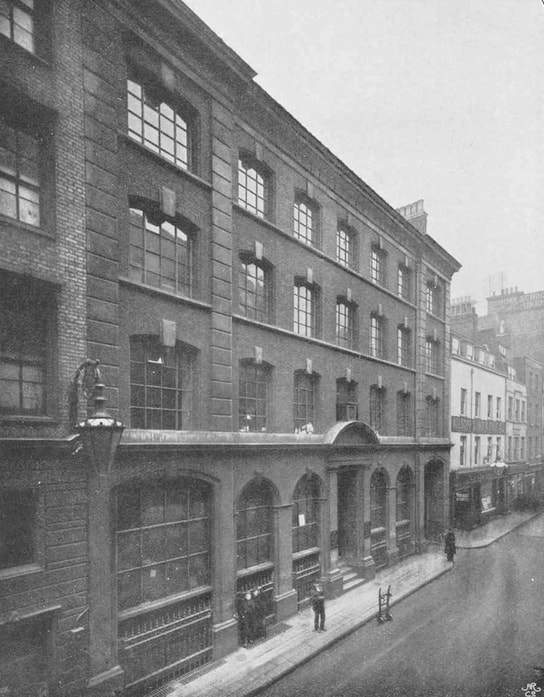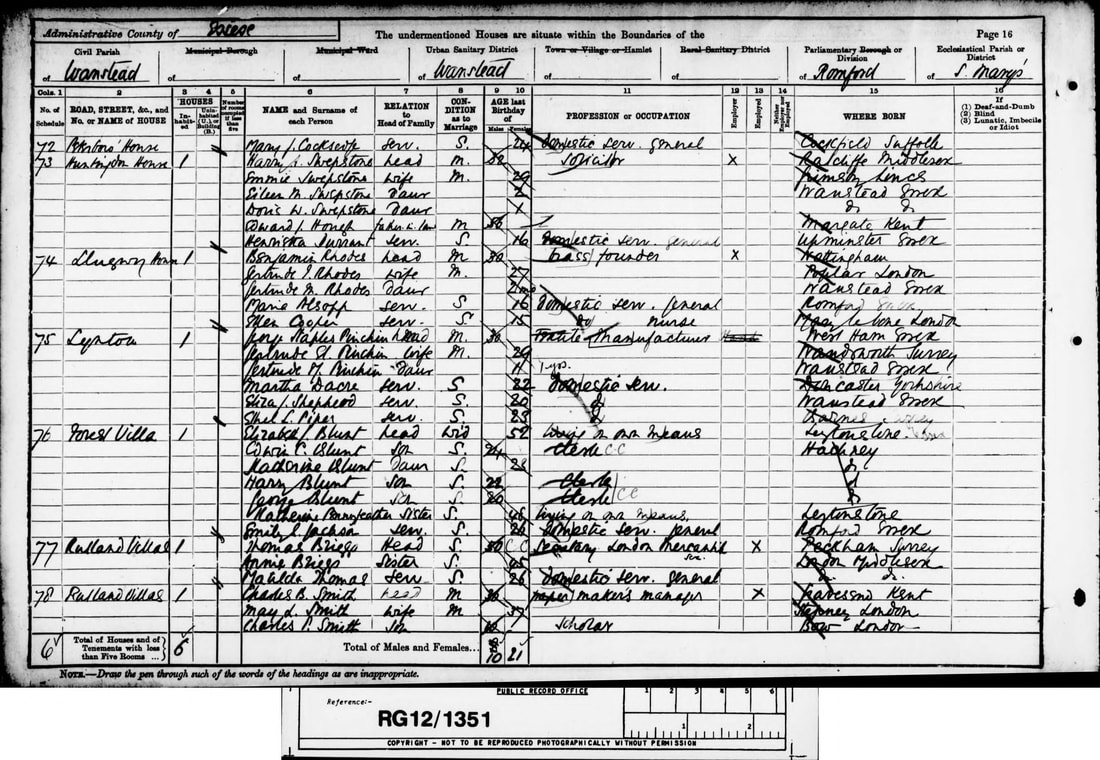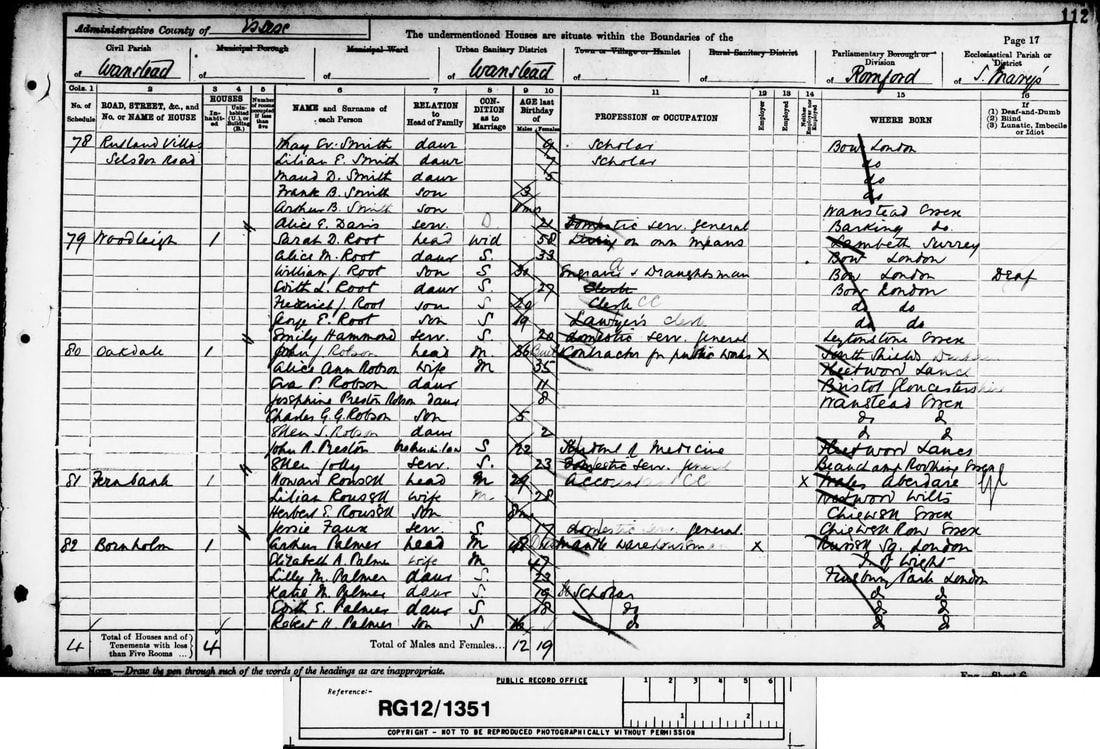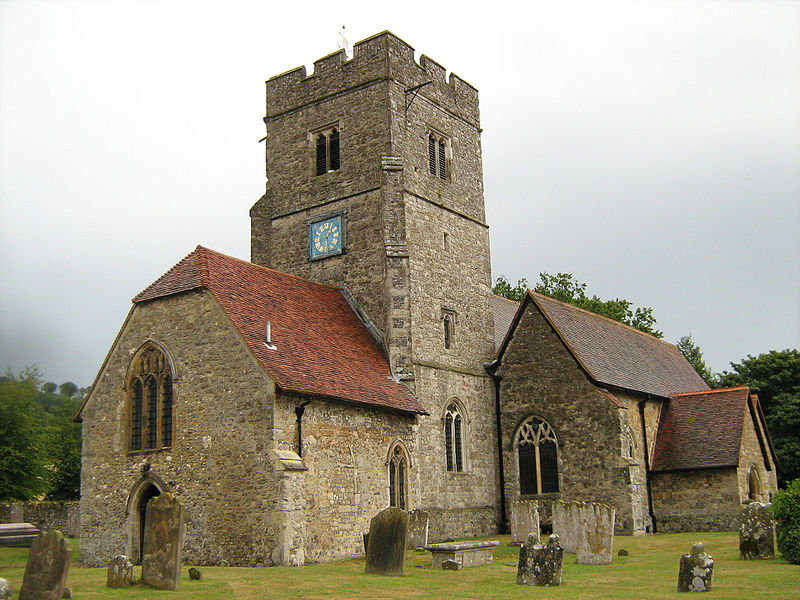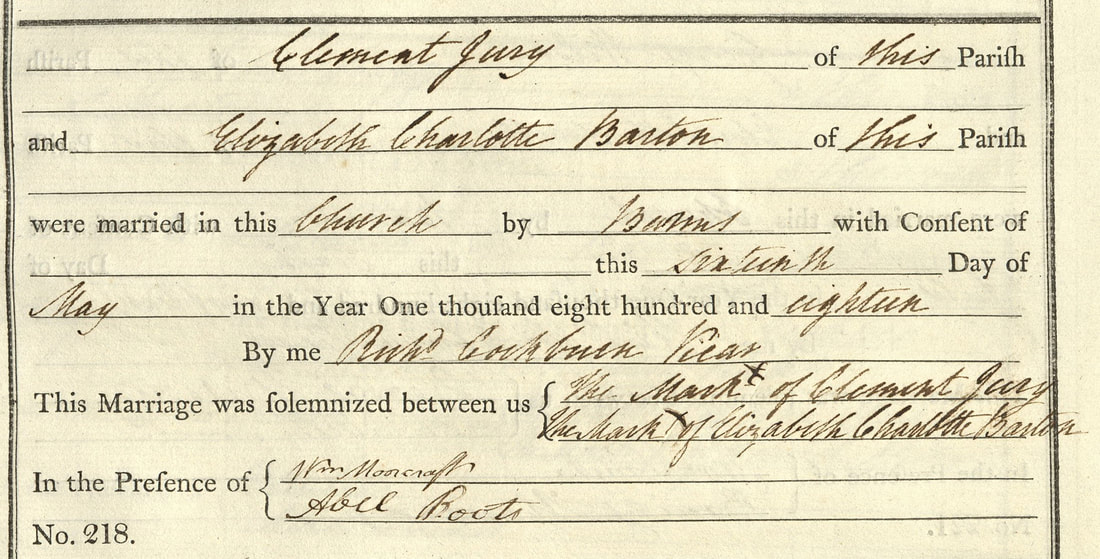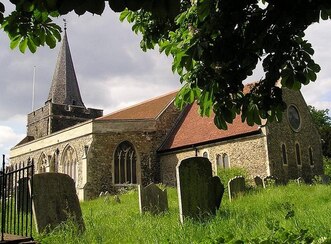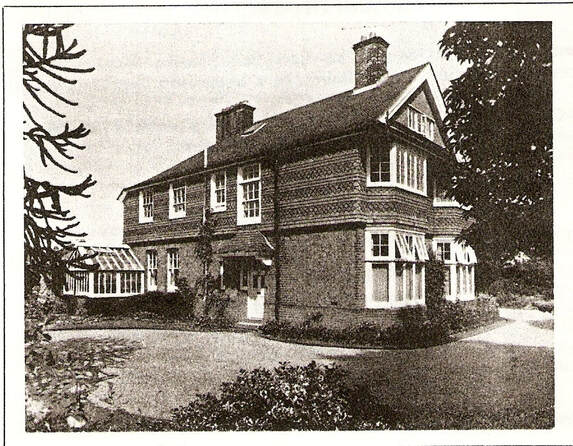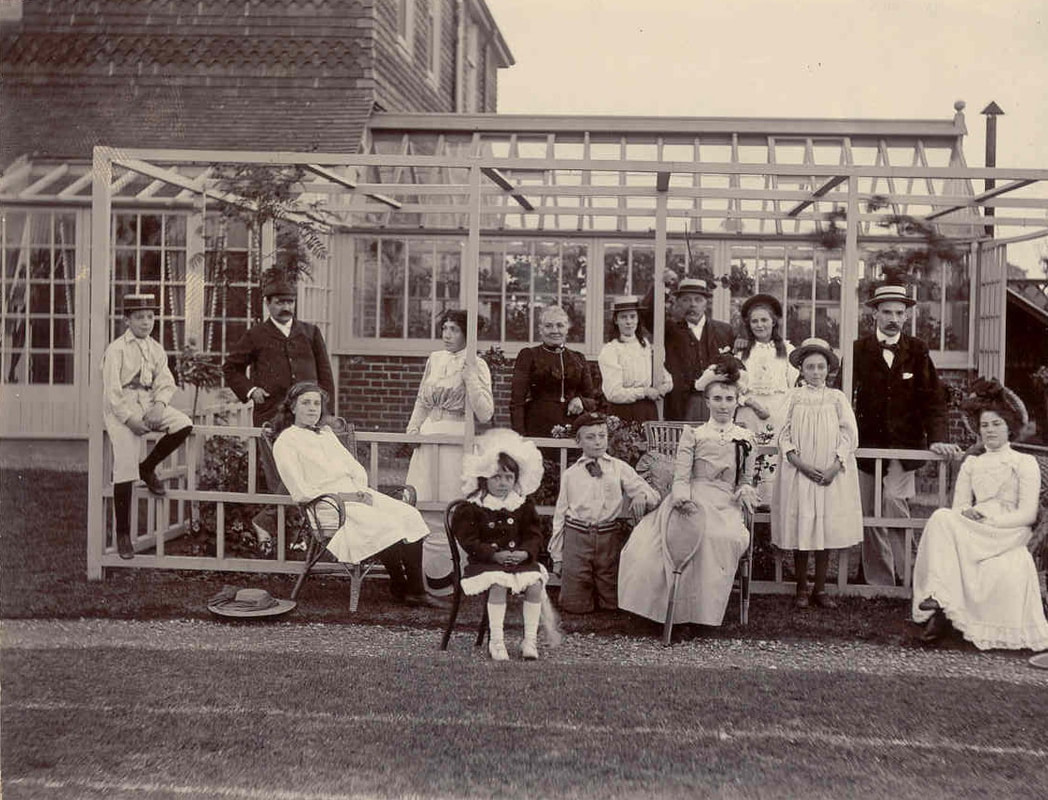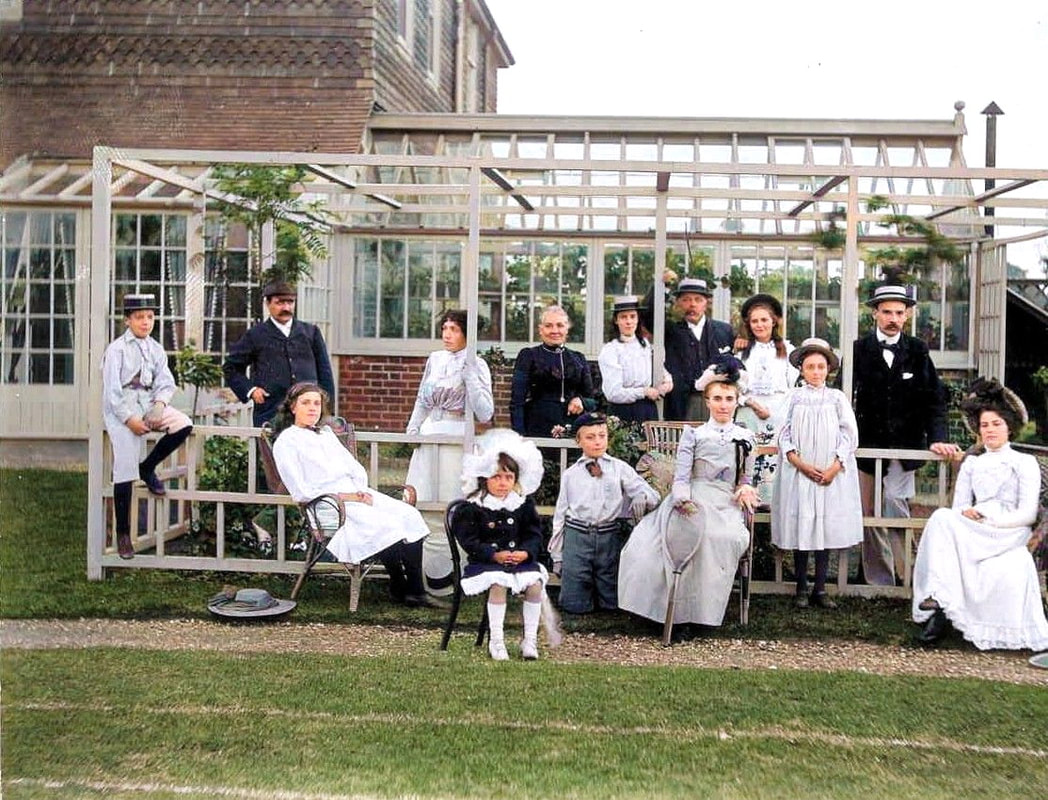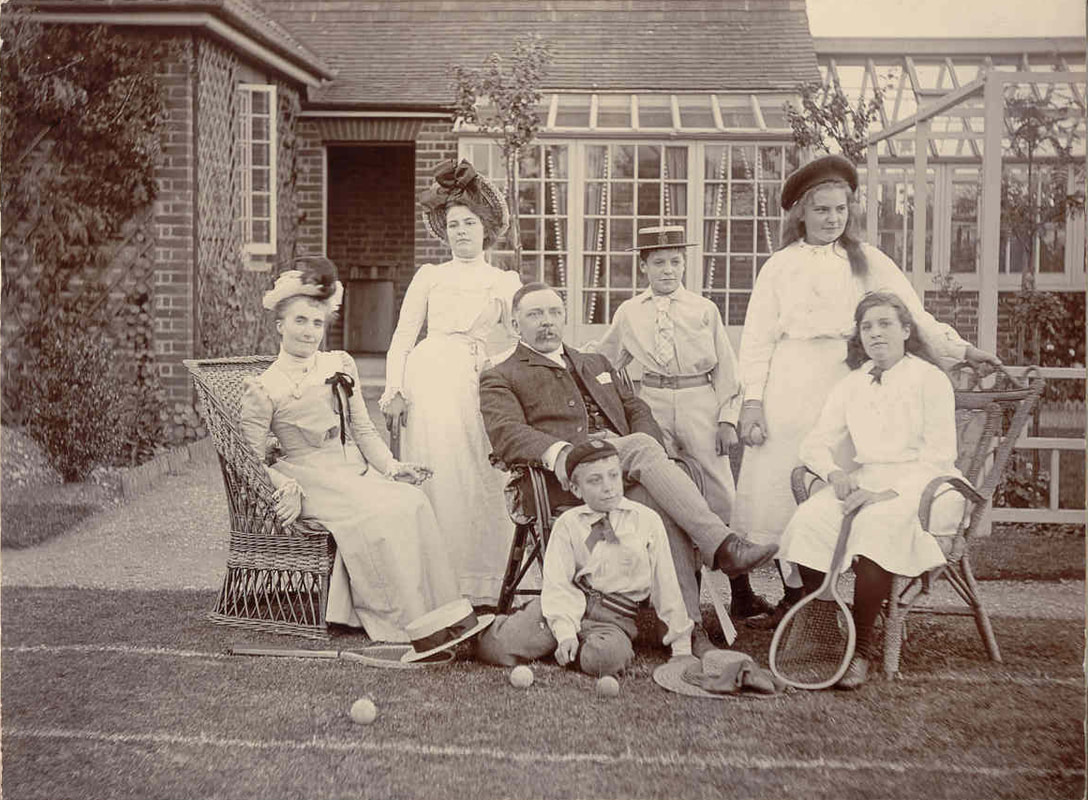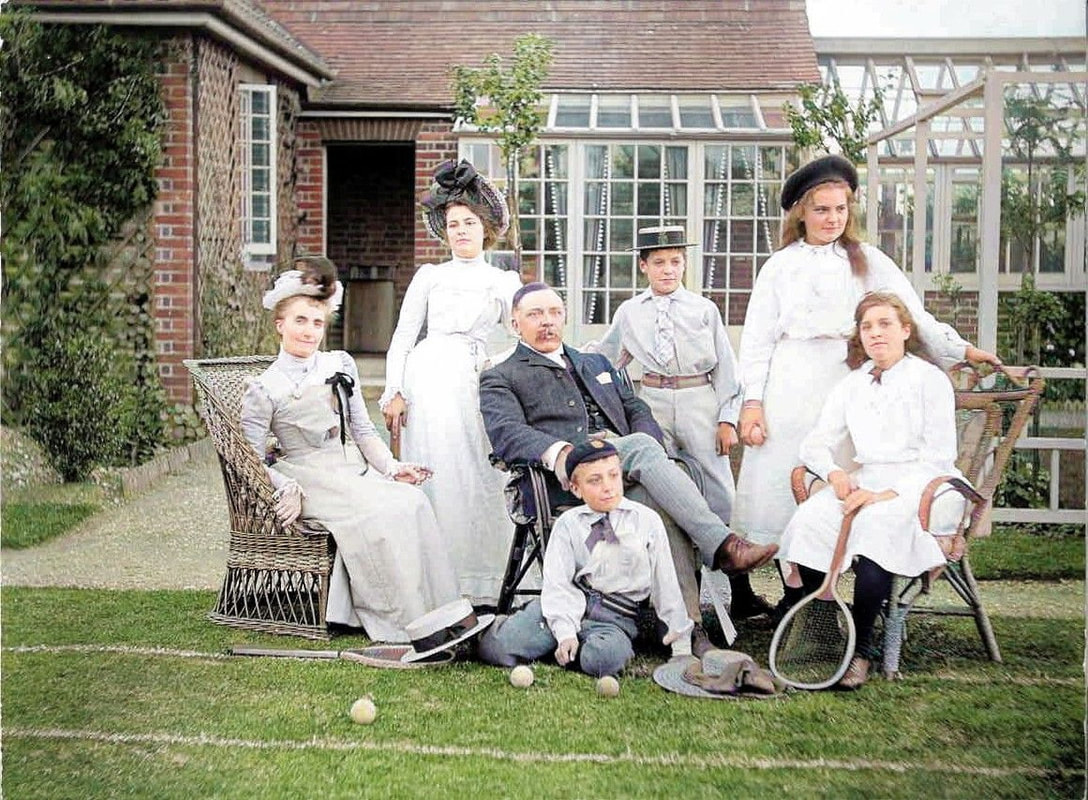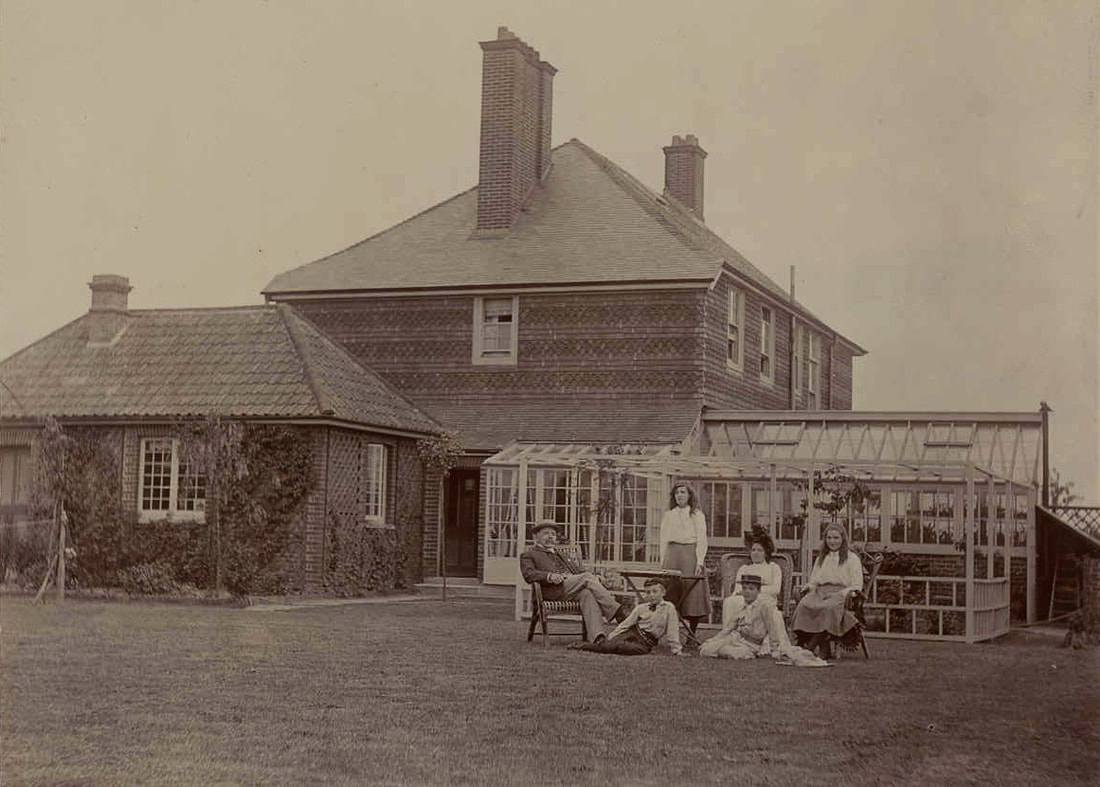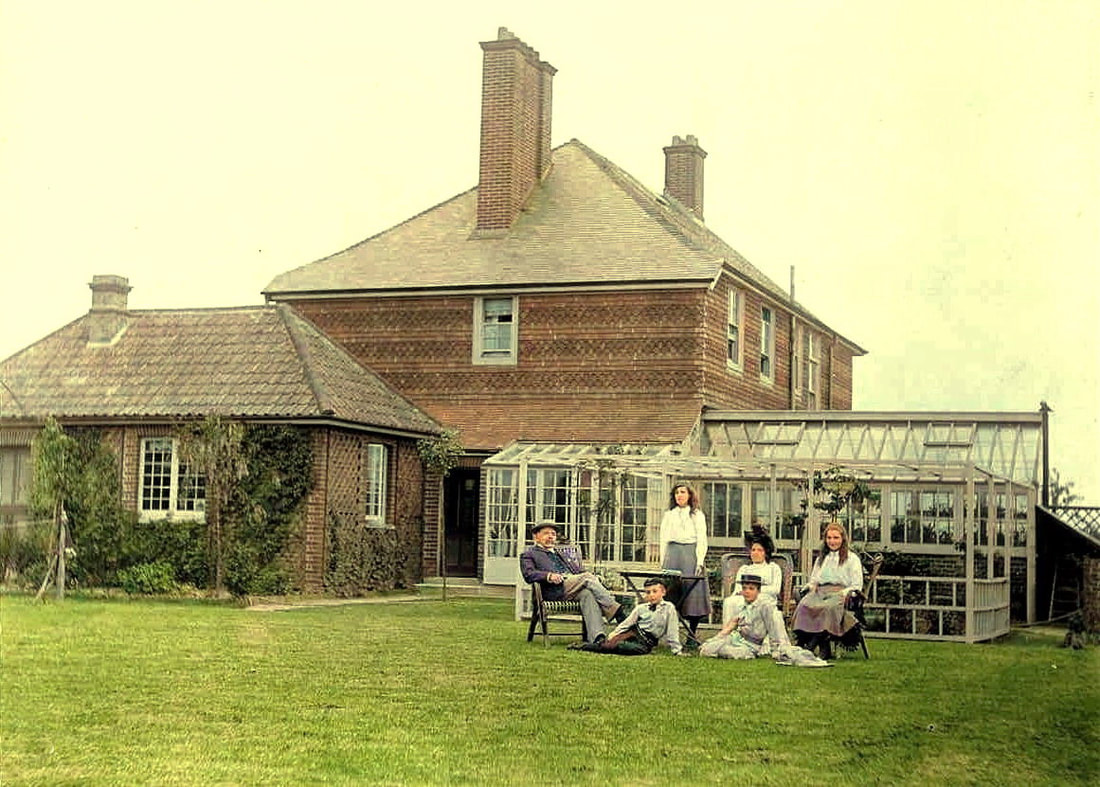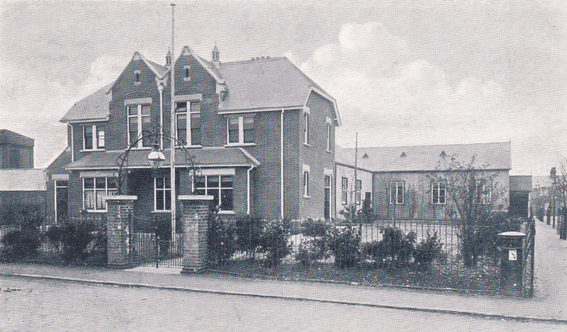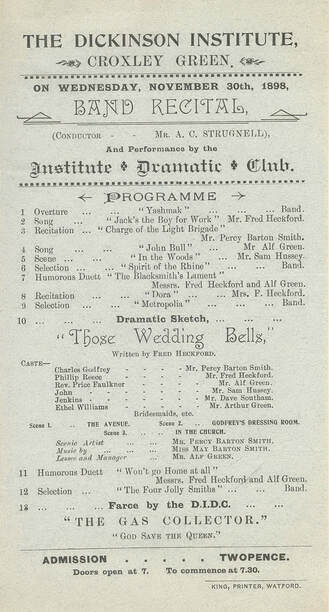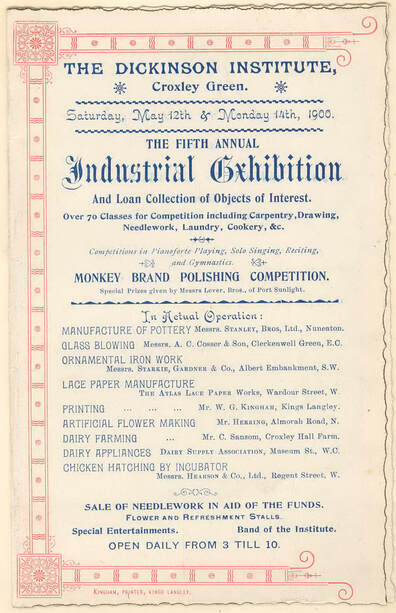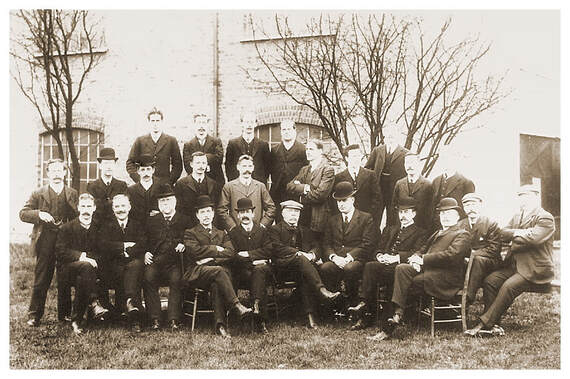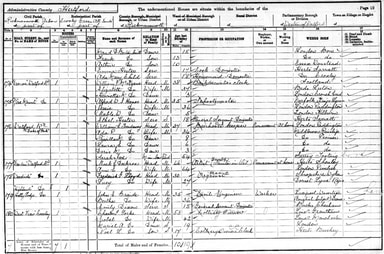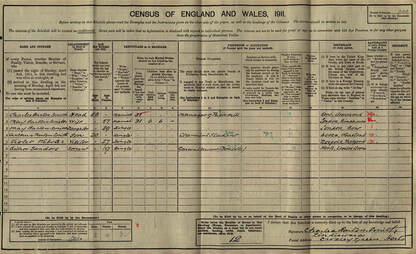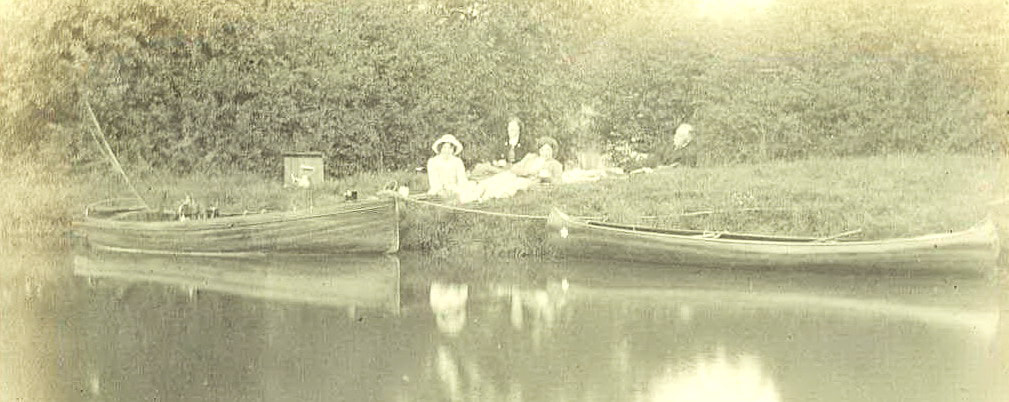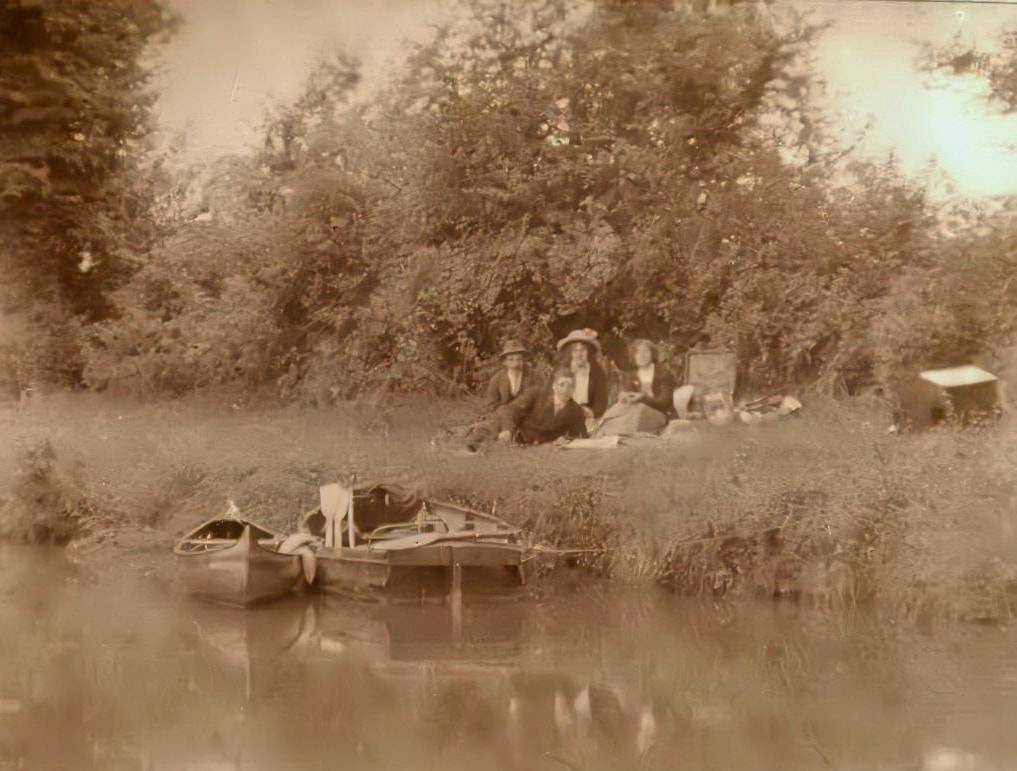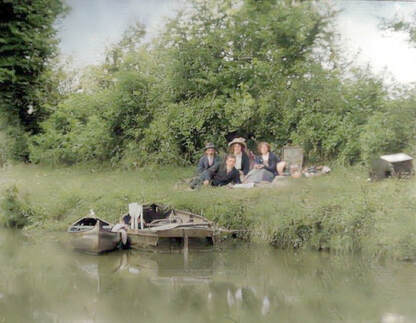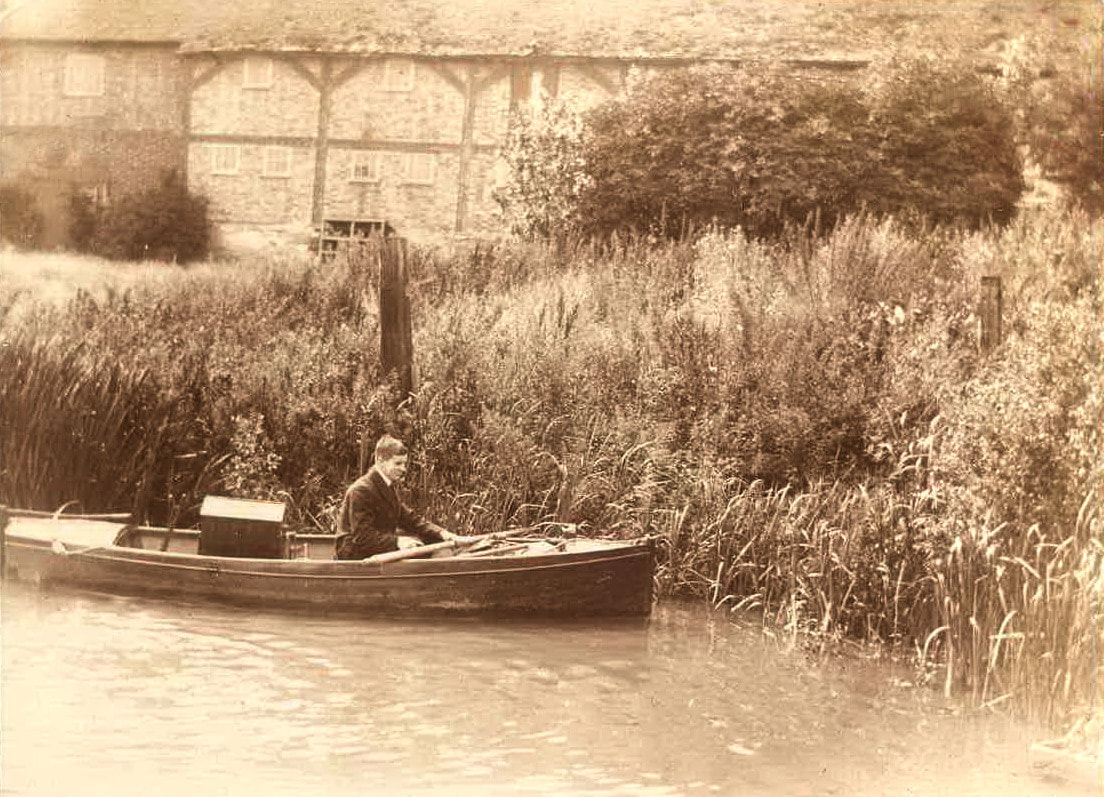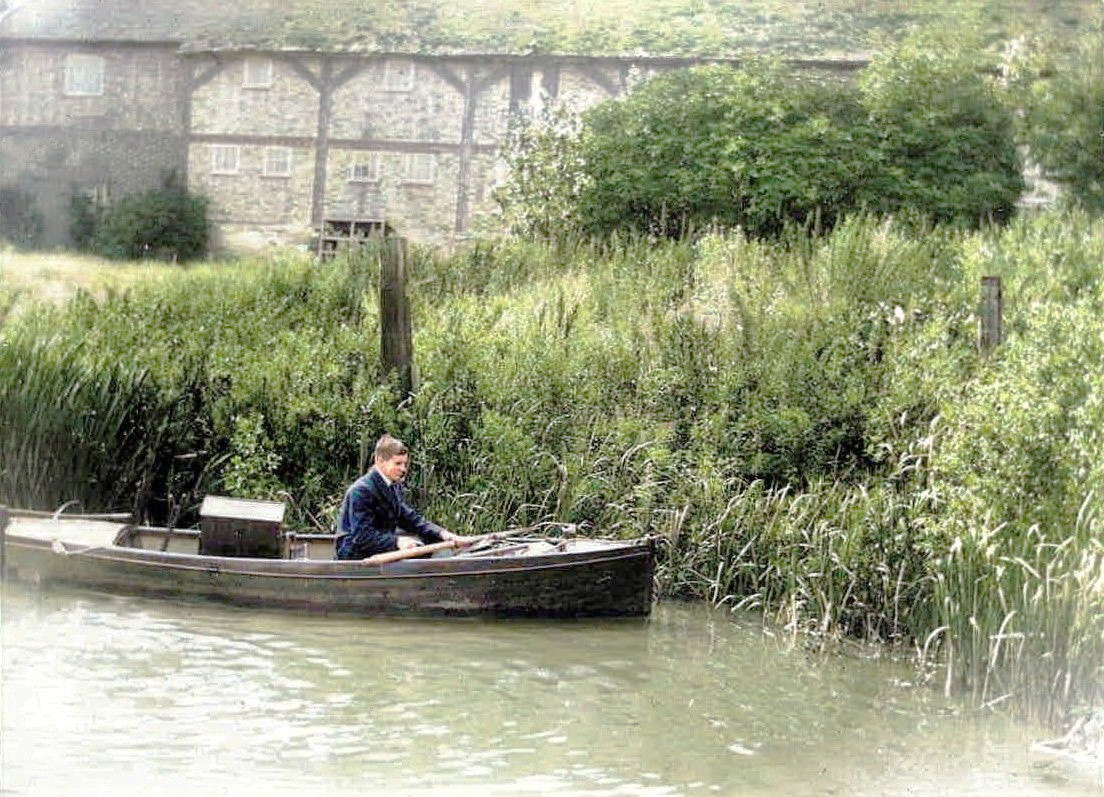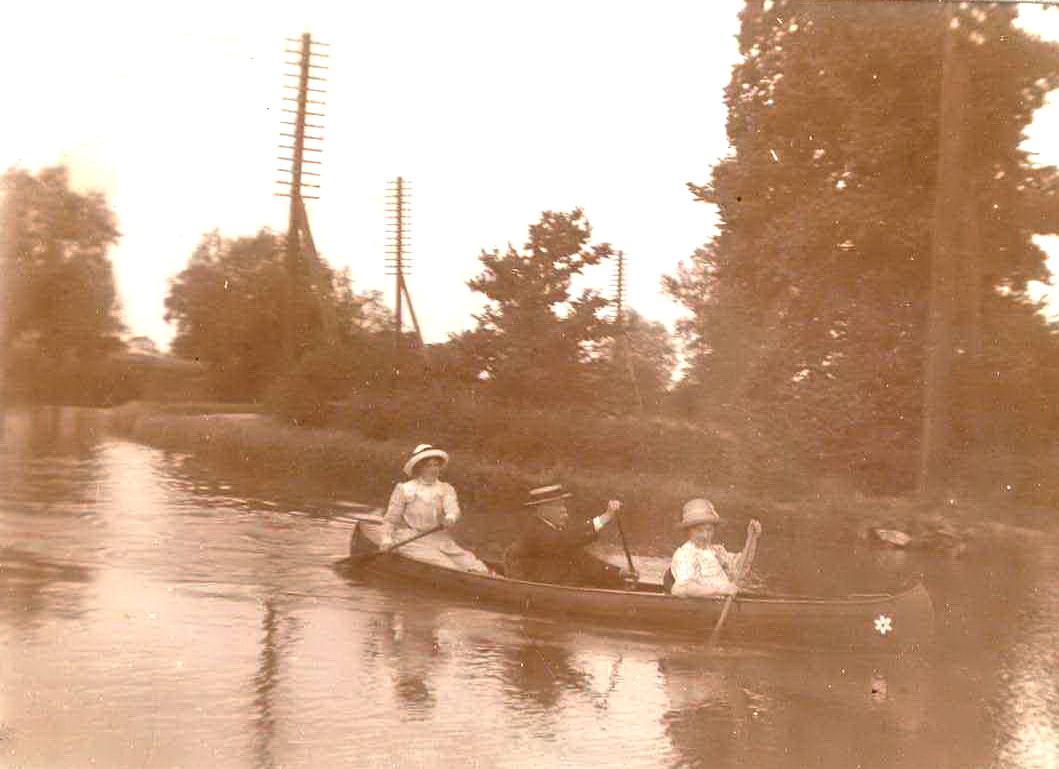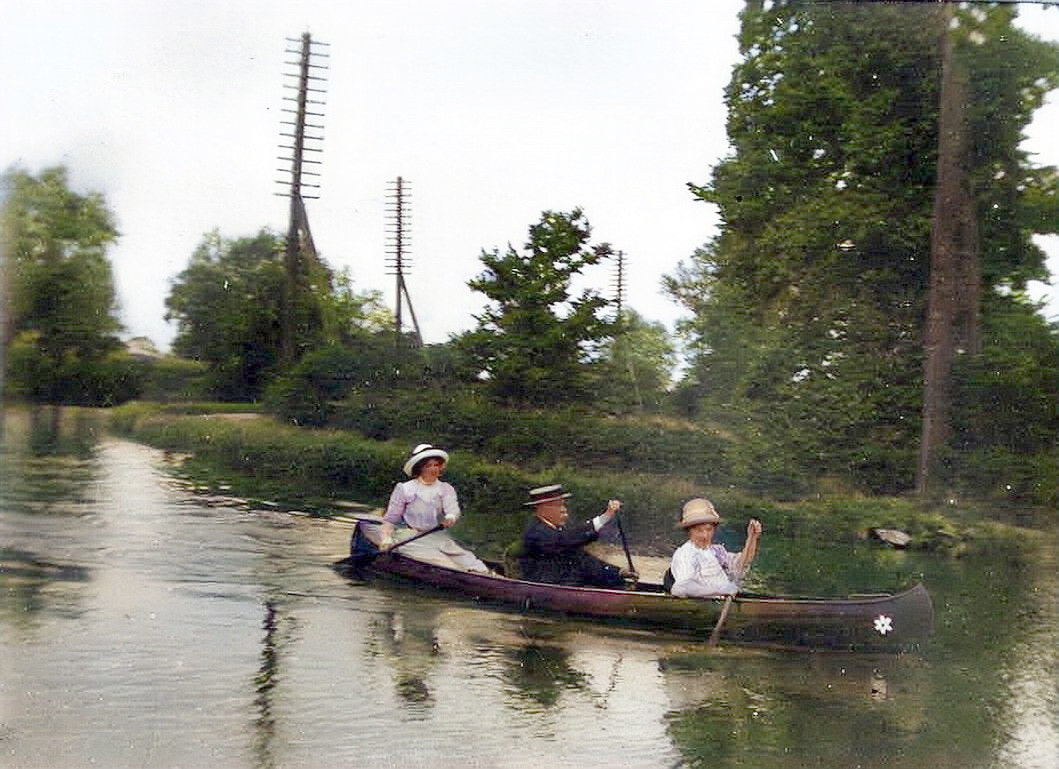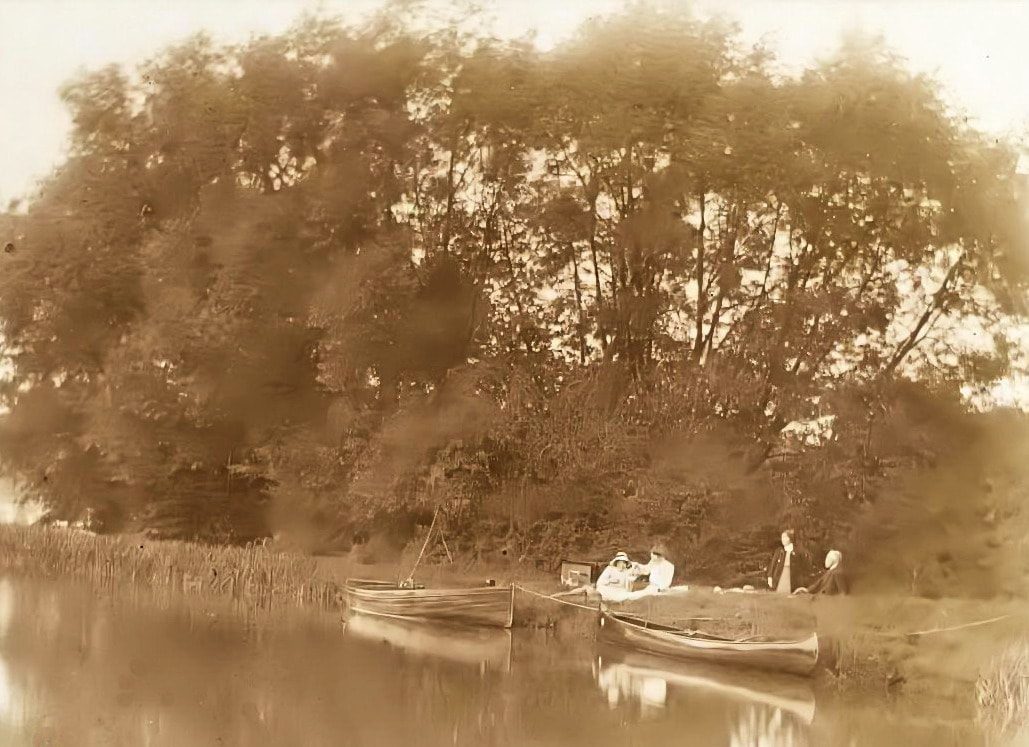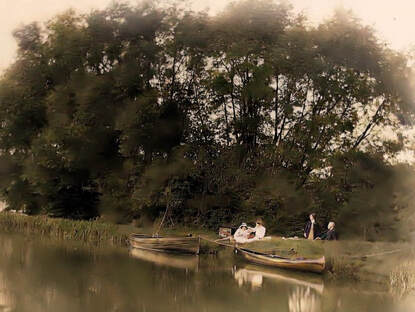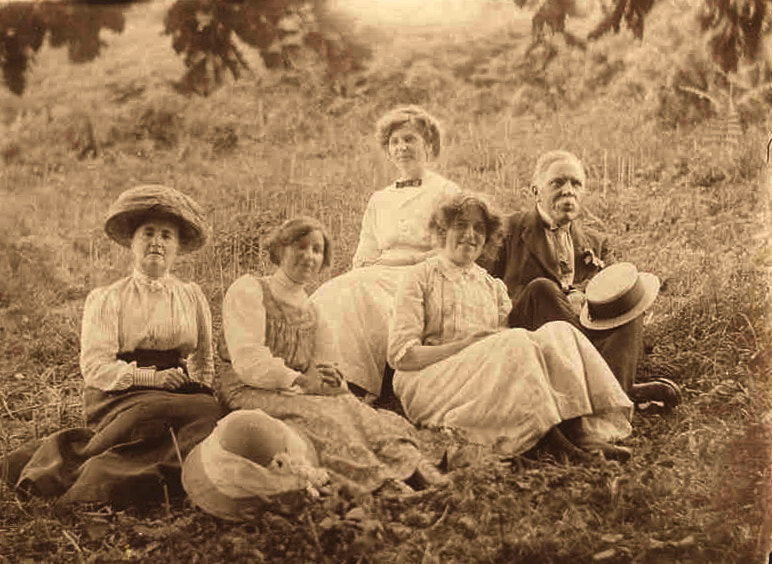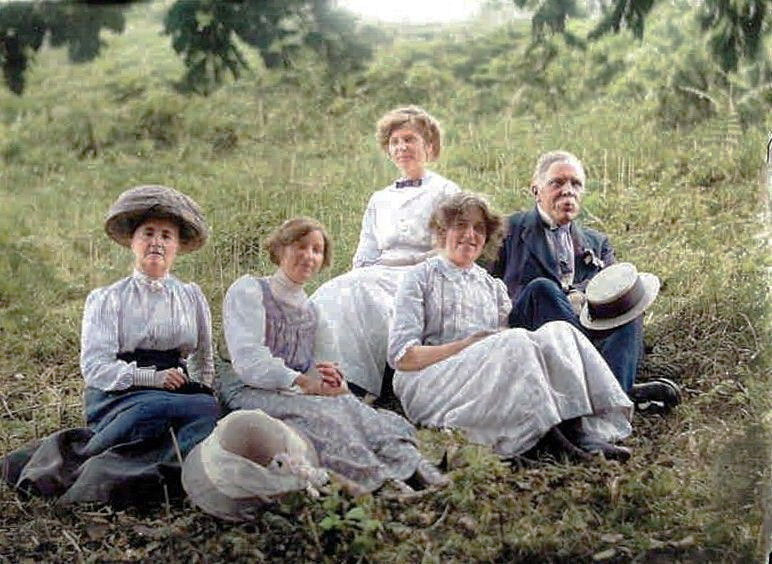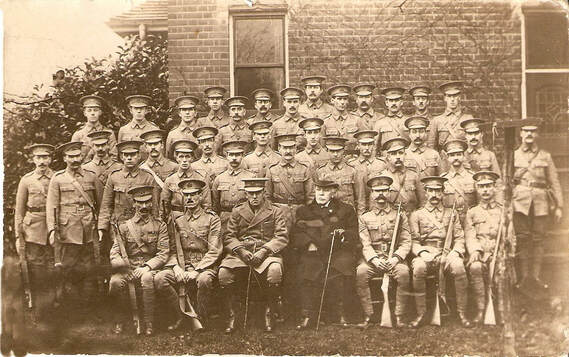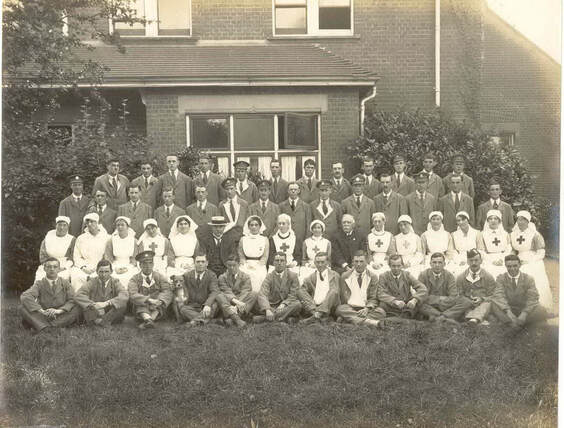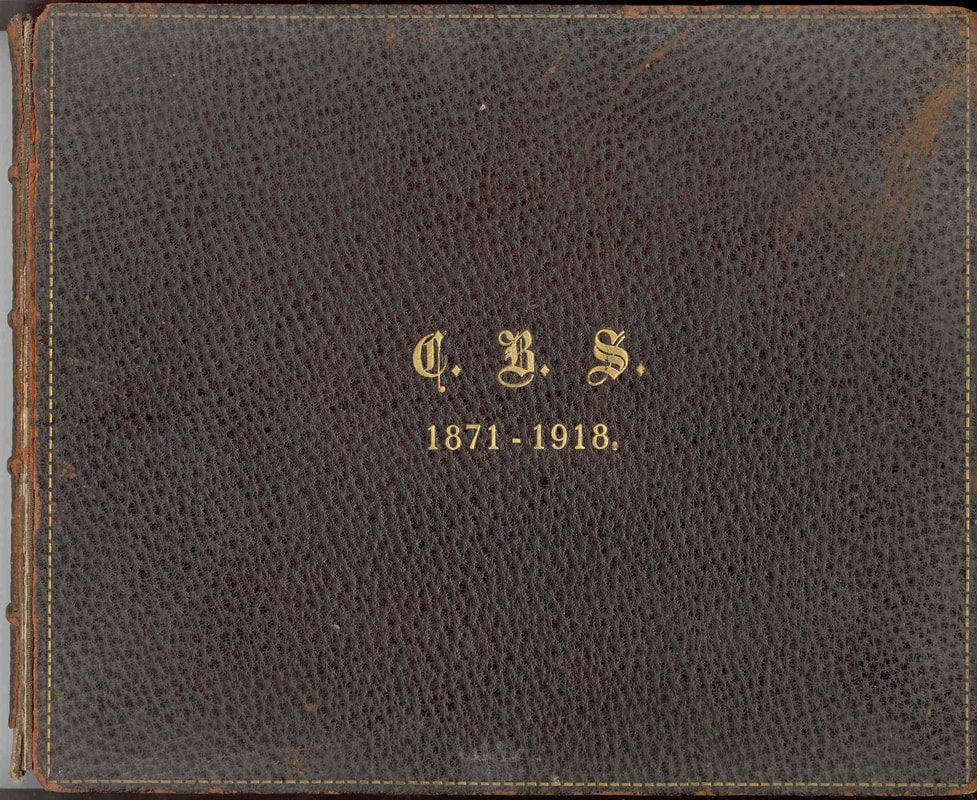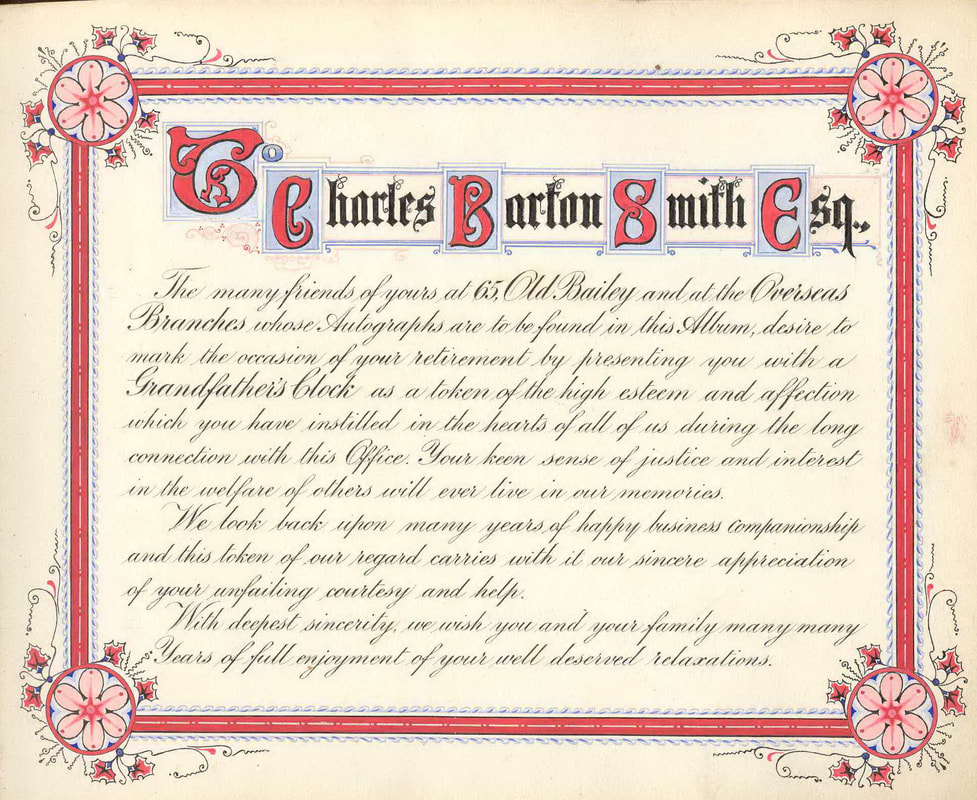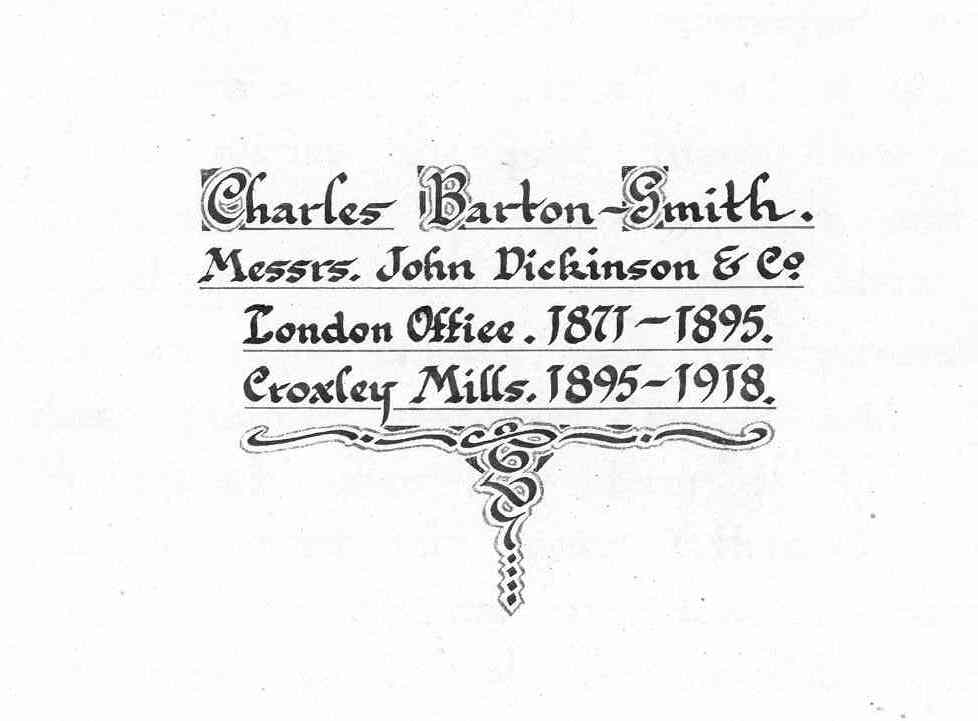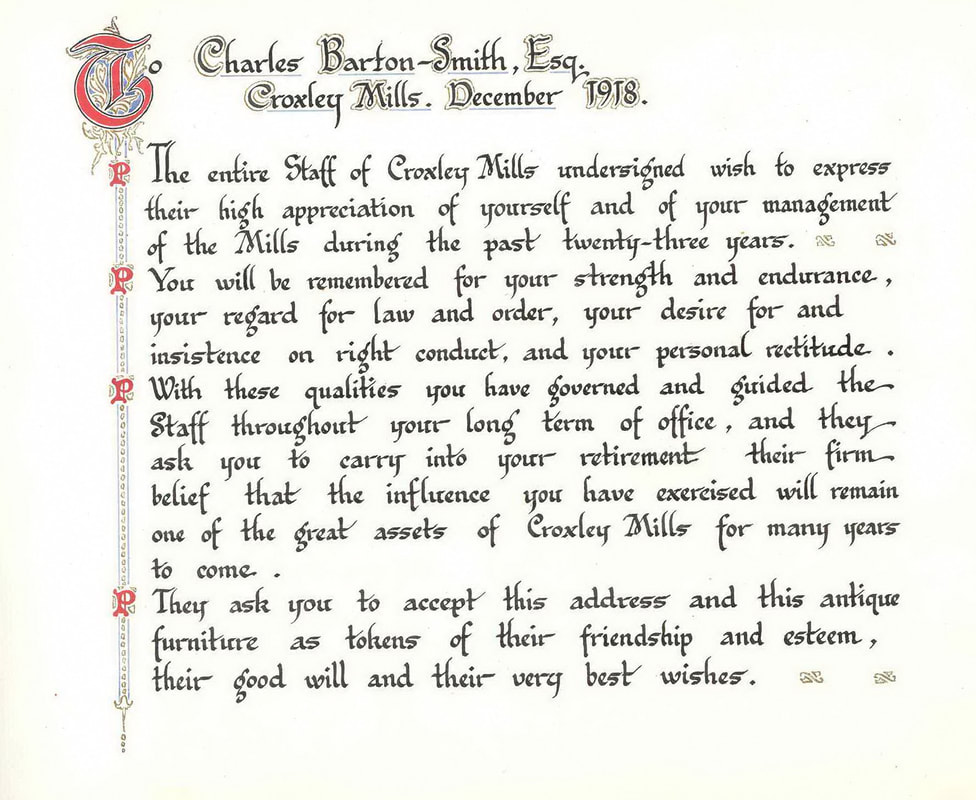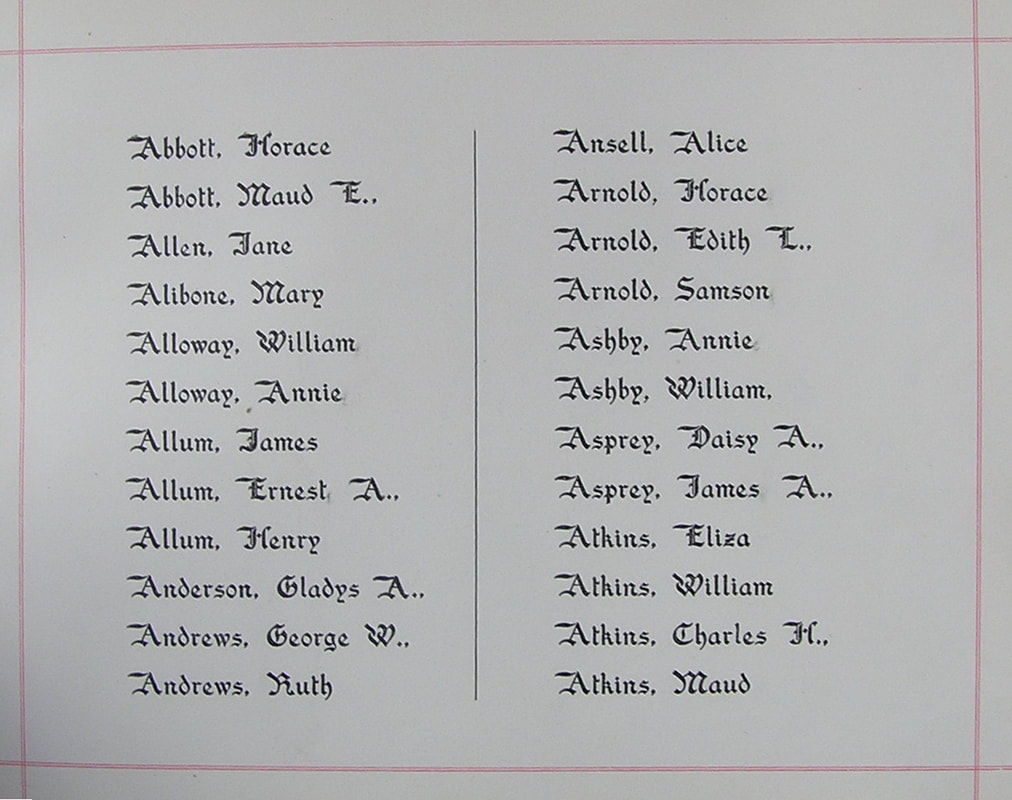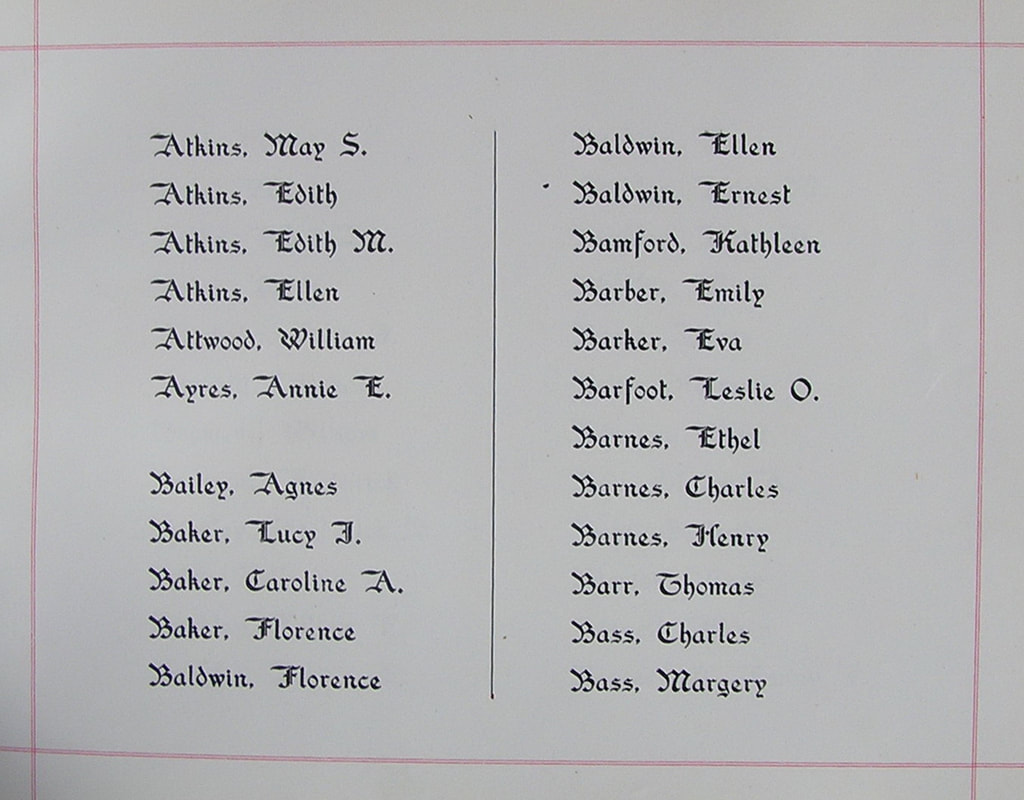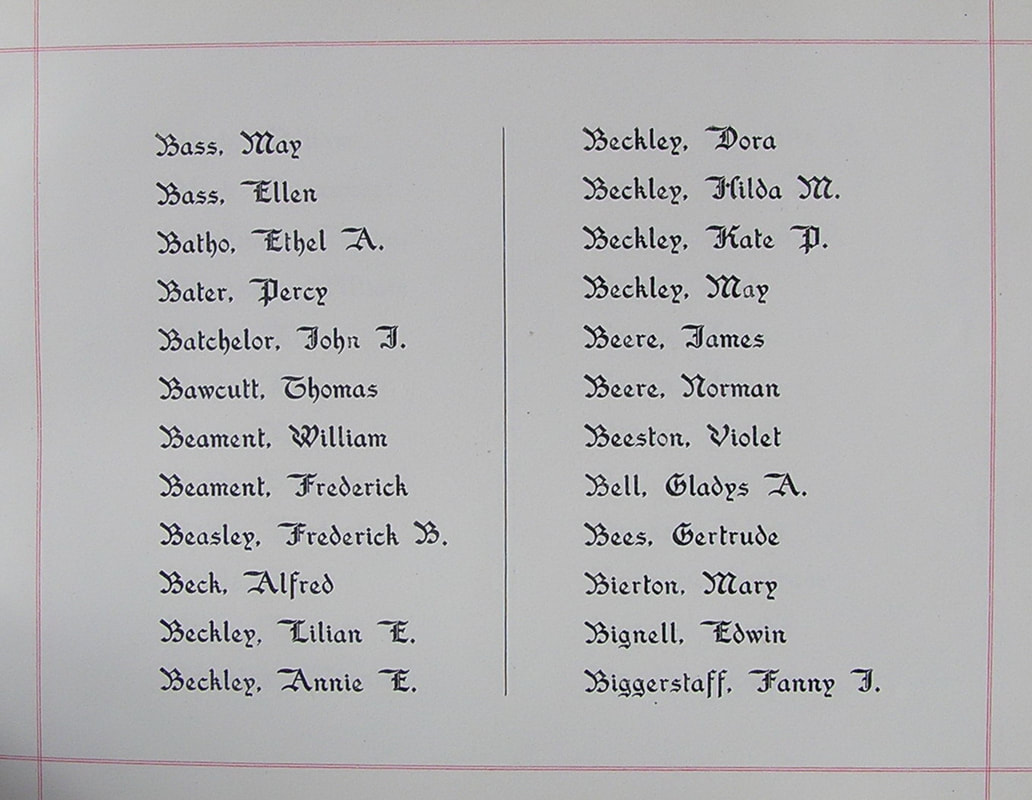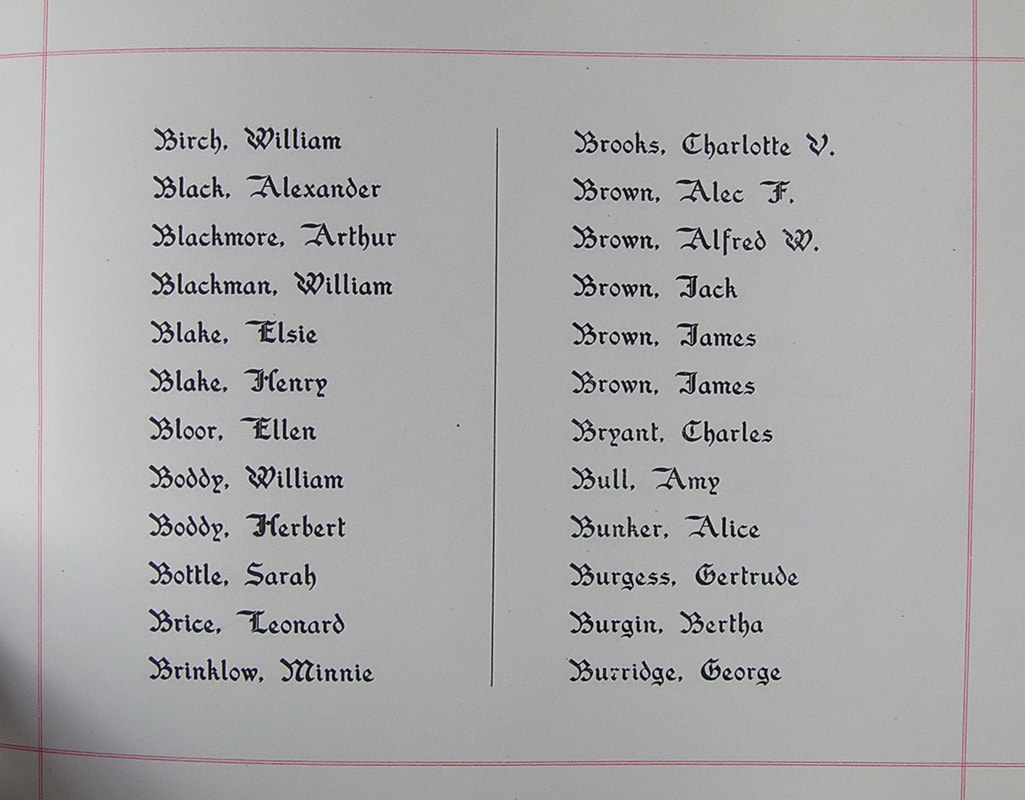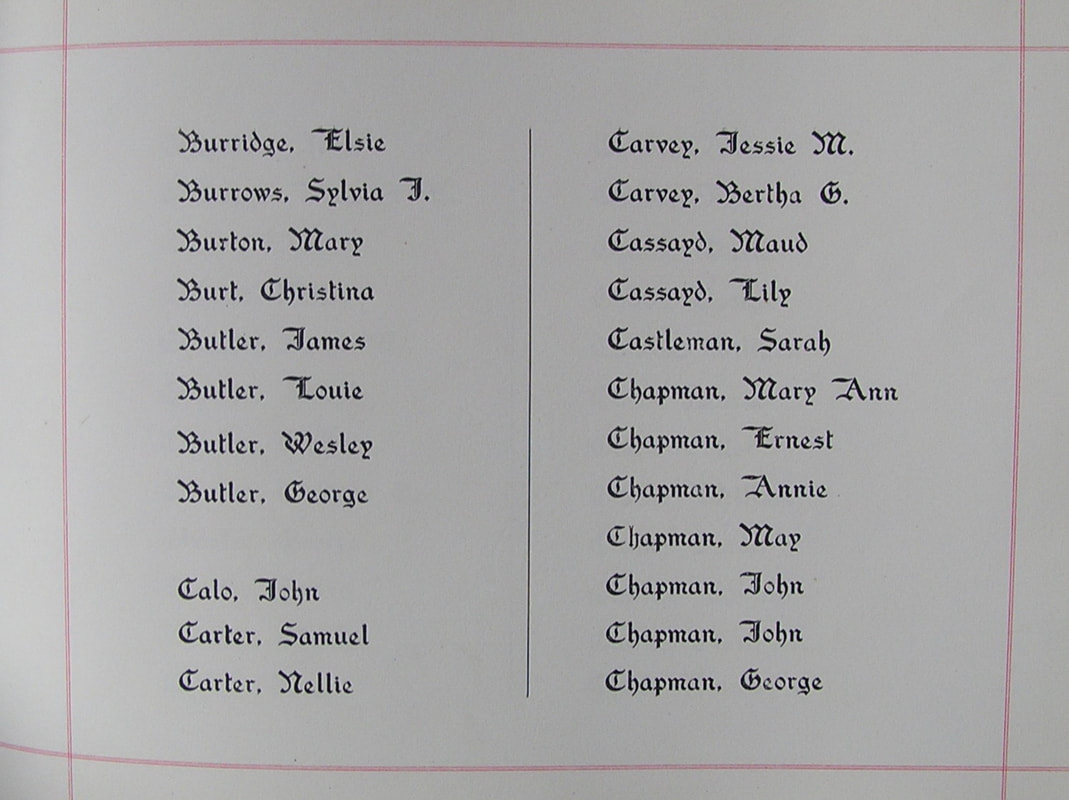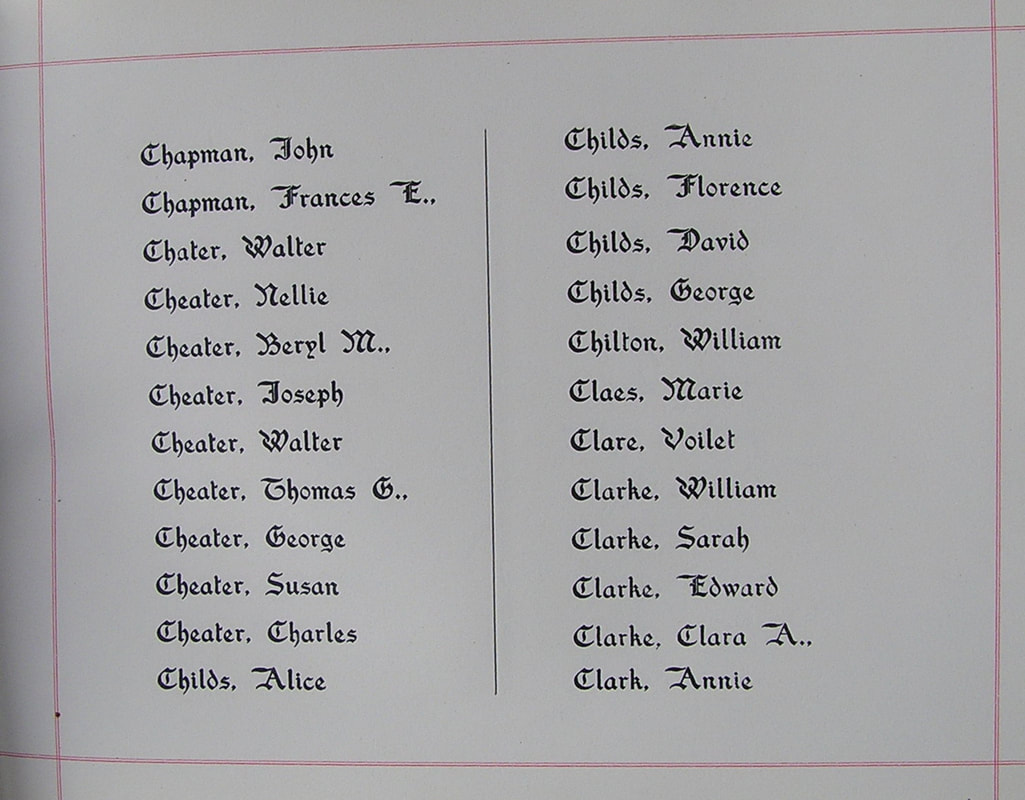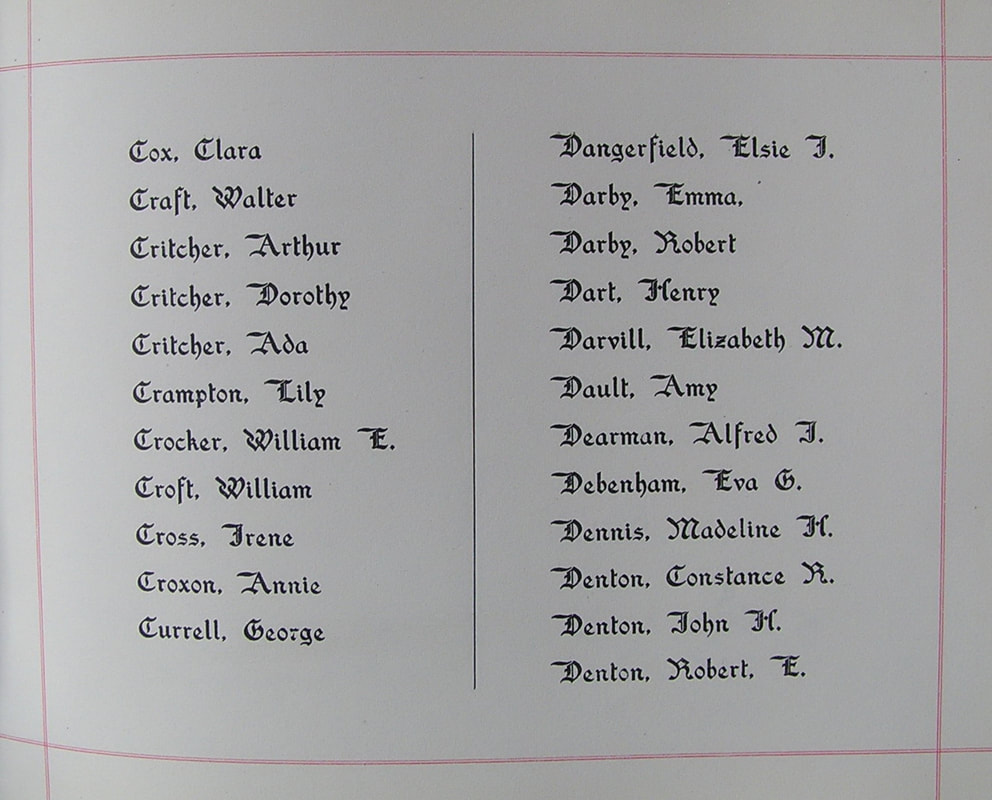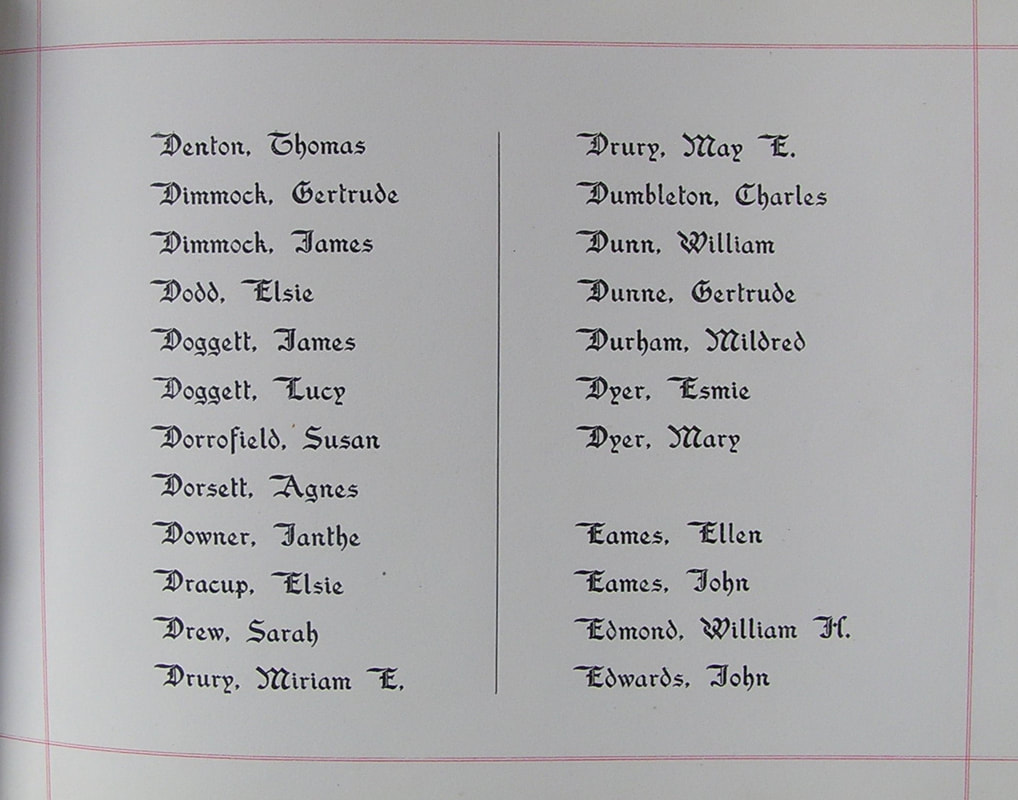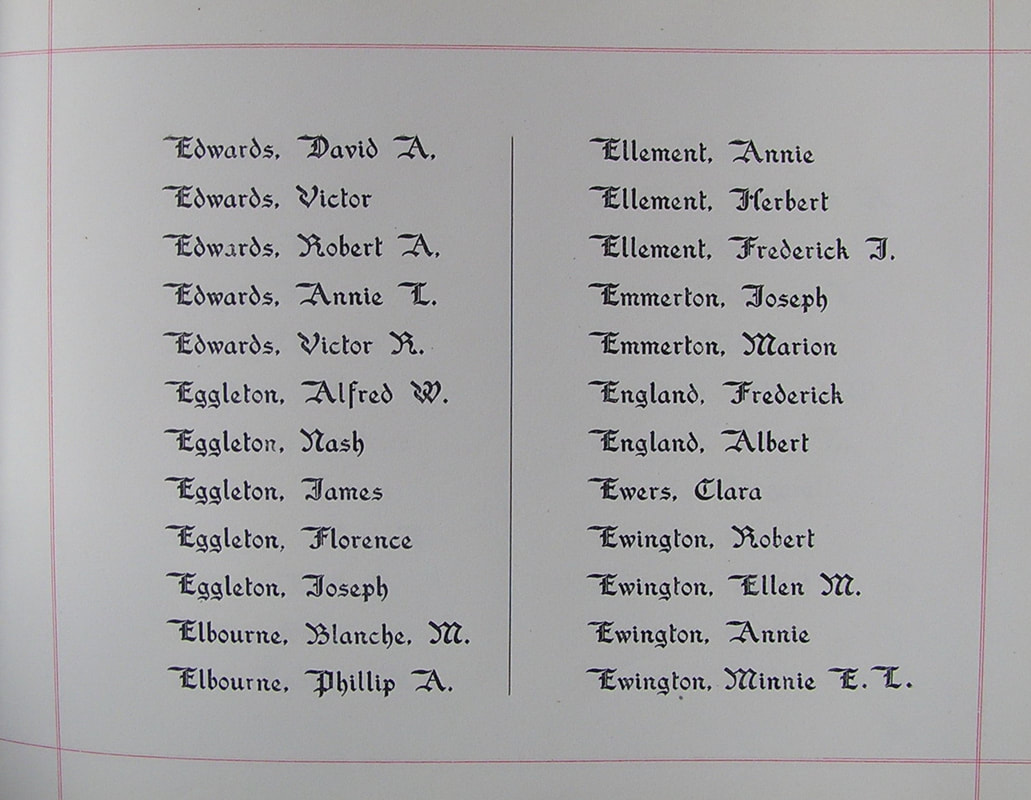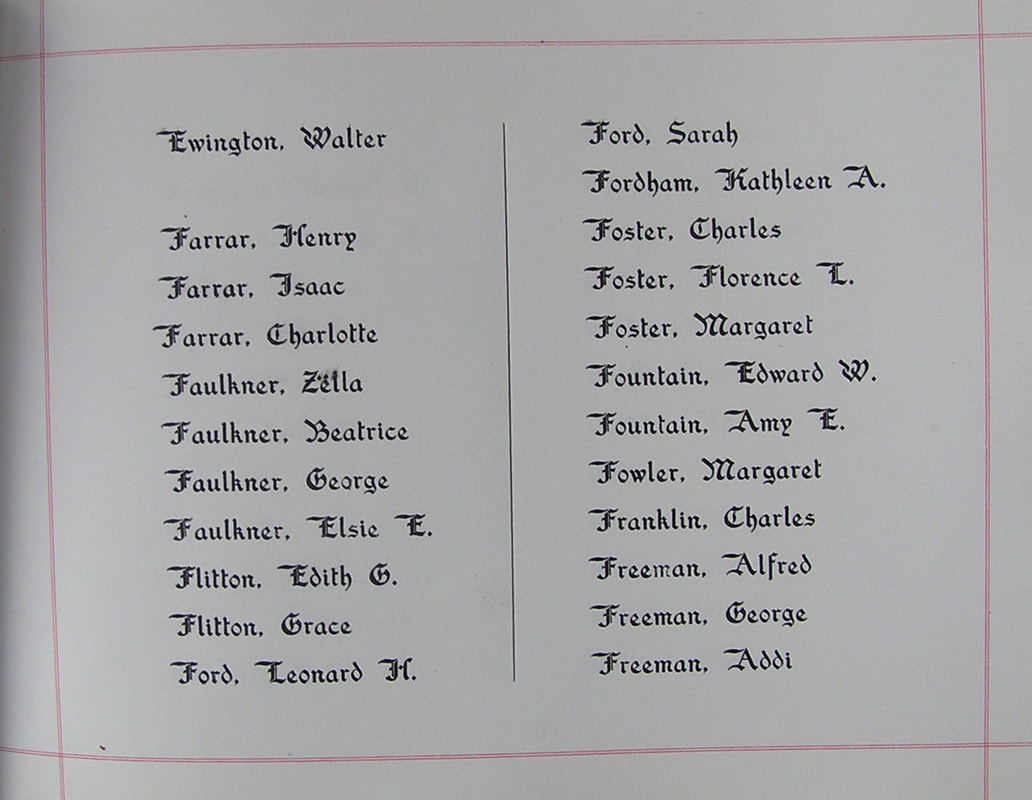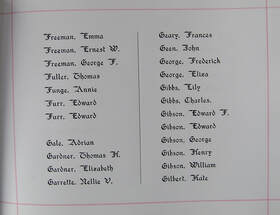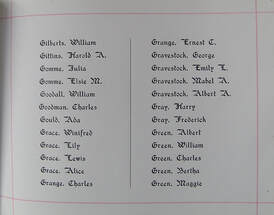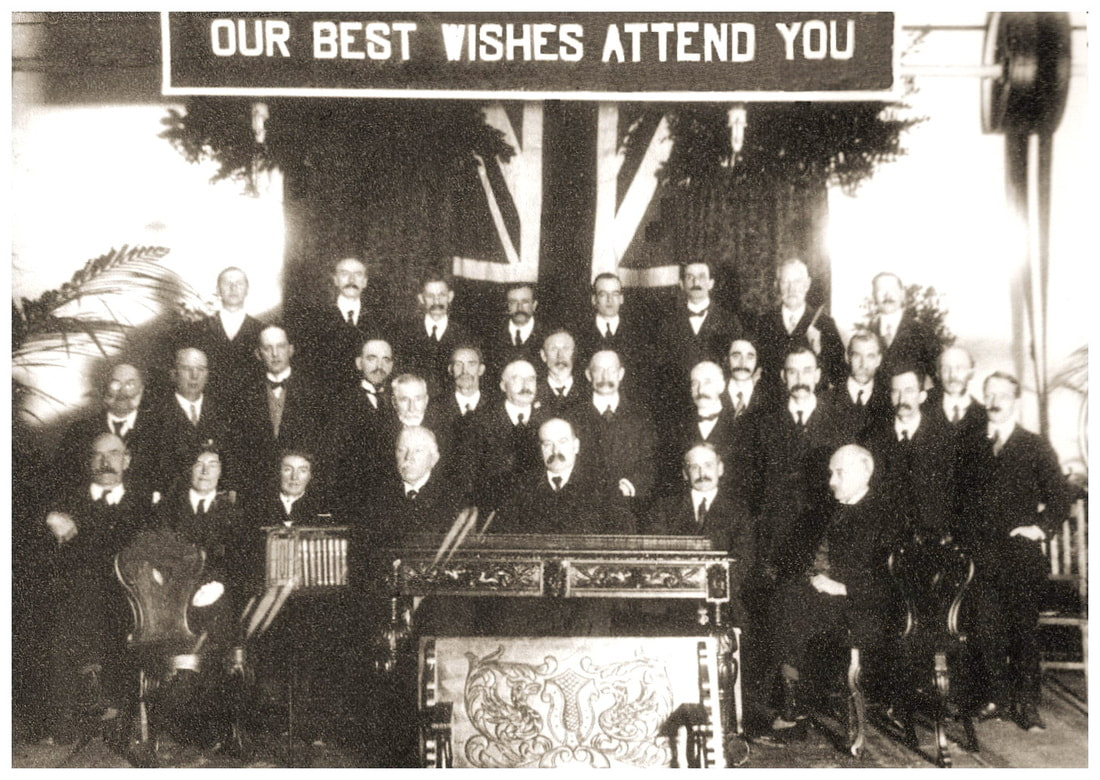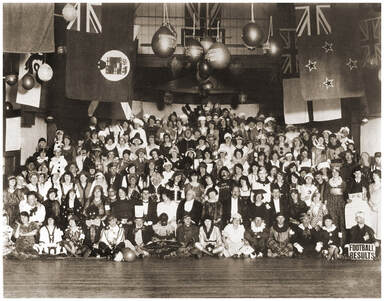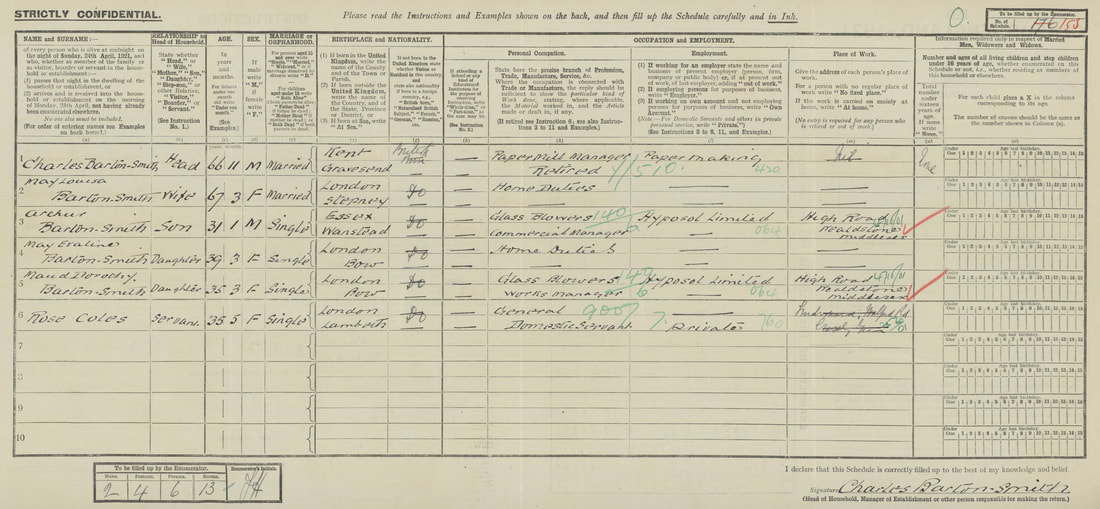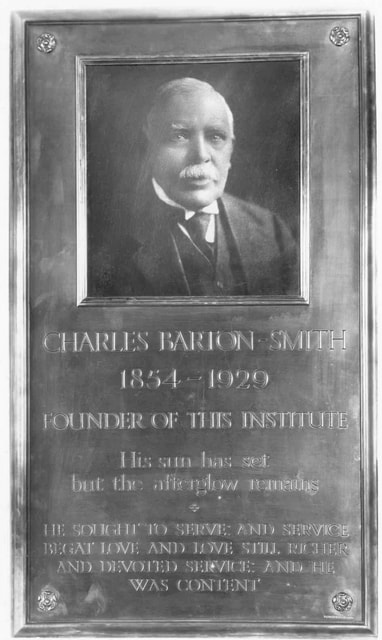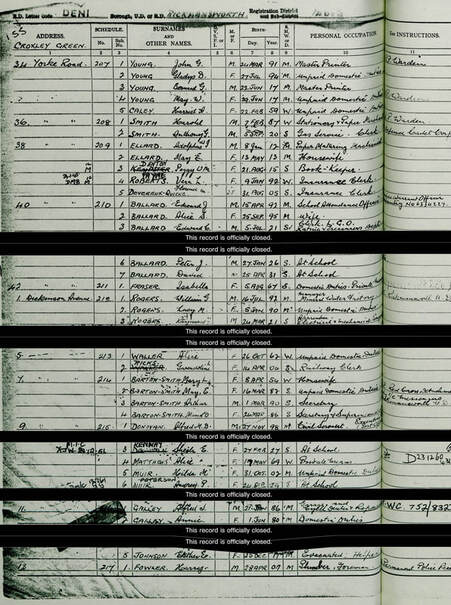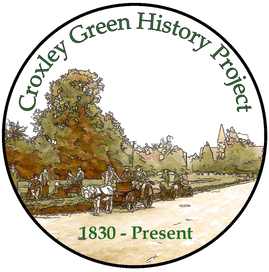Charles Barton-Smith 1854-1929
John Dickinson Manager 1899-1918
John Dickinson Manager 1899-1918
Charles was born in Gravesend Kent and baptised Charles Smith on the 8th October 1854 at St George’s parish church, Gravesend. His parents were Thomas and Mary Anne Smith. Thomas Smith was born in Rochester Kent c1823 and Mary Anne Smith (nee Jury) was born in Maidstone c1820. They were living in Clifton Road, Gravesend when Charles was born, just a short distance from the River Thames where Thomas worked as a Custom House Waterman.
Thomas was employed by the Trinity House Authority. As a Custom House Waterman he would probably be involved with guiding large vessels on this stretch of the river. He would necessarily be familiar with the tidal flow of the river, as it was important for shipping to be safely taken to and fro up to the Port of London and the docklands area for unloading and loading goods. Gravesend was well placed for many of the Trinity House pilot boats that were used for this purpose..
(The parish church of St George where Charles was baptised has an interesting history attached to it. The story of Princess Pocahontas a native American, reputed to have saved the life of Captain John Smith, who later left Virginia and married an Englishman, has several memorials to her in St George’s. See the story https://stgeorgesgravesend.org/history/pocahontas/)
(The parish church of St George where Charles was baptised has an interesting history attached to it. The story of Princess Pocahontas a native American, reputed to have saved the life of Captain John Smith, who later left Virginia and married an Englishman, has several memorials to her in St George’s. See the story https://stgeorgesgravesend.org/history/pocahontas/)
Sometime prior to the 1861 census, Thomas was promoted to an Examining Customs Officer. This gave him the authority to search vessels and buildings he suspected were avoiding paying the taxes and duties on imported goods. He also had the power to arrest anyone he suspected of smuggling.
Between 1861 and 1871, Thomas and Mary Ann with their six children moved from Kent nearer to the London docklands area and lived at 9 Carlton Square, St Peters, Old Mile End Town, Stepney, in the Borough of Tower Hamlets. The children living with their parents were Mary Ann aged 25, Thomas aged 23, a clerk with a Wool Merchant, Charlotte Elizabeth aged 21, William Kelly aged 19, a Ship Brokers clerk, Charles aged 16, a Stationer’s clerk, and Eliza Sarah aged 14, a Tie Maker. They moved again in the 1870s a short distance away, to 9 Clinton Road, Mile End Old Town.
Charles Smith was employed as a Stationer’s clerk with John Dickinson, at their Head Office, 65, Old Bailey, Ludgate Hill, close by to St Paul’s Cathedral. He was to remain with the firm until his retirement.
Charles Smith was employed as a Stationer’s clerk with John Dickinson, at their Head Office, 65, Old Bailey, Ludgate Hill, close by to St Paul’s Cathedral. He was to remain with the firm until his retirement.
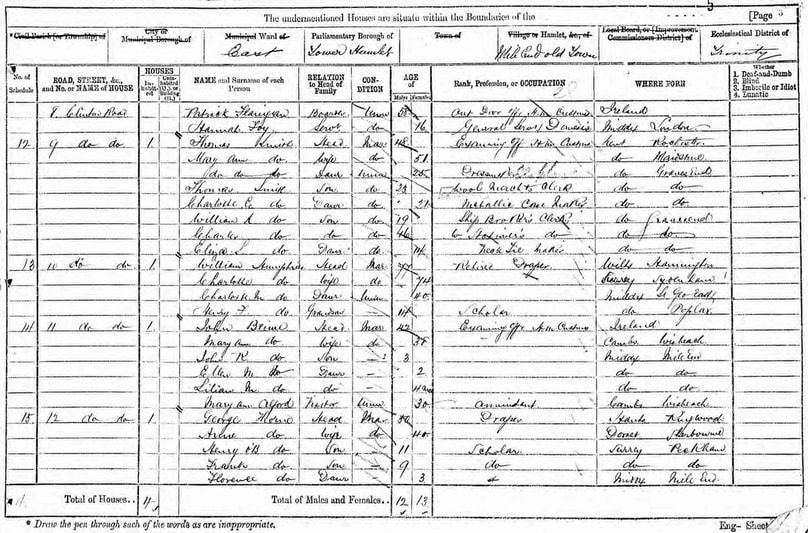
(© National Archives - IL-1491) 1871 census. Thomas Smith 48 yrs Examining Officer, H M Customs, his wife Mary 51 yrs, Mary Ann 25 yrs, Dresser ? Thomas 23 yrs, a clerk with a Wool Merchant, Charlotte Elizabeth 21 yrs Metallic case maker, William Kelly 19 yrs, a Ship Brokers clerk, Charles 16 yrs, a Stationer’s clerk, and Eliza Sarah 14 yrs, a Tie Maker.
In 1879 he married Mary Louisa Mitchell in the Mile End District. Mary had been born on the 8th April 1852, in Stepney and was baptised on the 7th May 1854 in Limehouse Coverdale Chapel. Her parents were Alexander and Mary Matilda (nee Cordery). Alexander was a shipwright and mariner and may well have come into contact with Charles’ father. This might explain how Charles and Mary met. Sadly, Alexander Mitchell, aged 60, died around the same time of his daughter’s marriage.
Charles’ parents Thomas and Mary moved from 9 Clinton Road to 80 Clinton Road and following Charles and Mary’s marriage they were living next door to 78 Clinton Road.
Charles’ parents Thomas and Mary moved from 9 Clinton Road to 80 Clinton Road and following Charles and Mary’s marriage they were living next door to 78 Clinton Road.

(© National Archives - IL-1491) 1881 census Charles his wife Mary Louisa and their first child Percy Charles, live at 78 Clinton Road. His parents Thomas and Mary have moved from 9 Charlton Square, and lived next door No. 80 Clinton Road, Mile End Old Town, Stepney. Charles is 26yrs and is employed as a Papermaker’s clerk.
Charles and Mary had six children, Charles Percy c1880, May Eveline c1882, Lilian Ethel c1884, Maud Dorothy c1886, and Frank c1888. They were recorded on the census born in Bow, London. The family moved to Rutland Villas, Wanstead Essex, where Arthur was born in 1890.
The 1891 census shows that Charles is now employed as a Papermaker’s Manager now age 36 years. However, it is unclear from this entry what this new role involved within the Head Office.
The 1891 census shows that Charles is now employed as a Papermaker’s Manager now age 36 years. However, it is unclear from this entry what this new role involved within the Head Office.
A considerable amount of the Dickinson’s archives for the offices in Old Bailey were destroyed in the WW2 bombing of the City of London. Any records relating to Charles Smith and his place in the Company at this time were among those lost.
The two censuses above highlights an interesting change to the information the family – that is, Charles as Head - had previously provided for the Enumerator to complete his register. Compared to former census records, Charles and his two youngest sons, Frank and Arthur, now had a ‘B’ inserted before their surname of Smith. This however, did not apply to his eldest son Charles P, or the females in the household. There is no indication in this census what the ‘B’ represented. It does however appear to coincide with Charles’ promotion and he became known in future documentation as Barton-Smith.
However, records from the Ancestry website and Kent Archives ‘Parish Registers’ for Charles' mother, show that Charles' maternal grandmother was Elizabeth Charlotte Barton (c1799-1879). She married Clement Jury (c1789-1838) a ‘Waterman’ on 16th May 1818 at St Mary the Virgin church, Boxley, Maidstone, Kent. Their daughter Mary Anne Jury (c1820-1899) married Thomas Smith 25th November 1844 at All Saints Church, Frindsbury, Rochester, Kent. Perhaps their son Charles decided to included the family name of Barton with Smith on the occasion of his promotion
However, records from the Ancestry website and Kent Archives ‘Parish Registers’ for Charles' mother, show that Charles' maternal grandmother was Elizabeth Charlotte Barton (c1799-1879). She married Clement Jury (c1789-1838) a ‘Waterman’ on 16th May 1818 at St Mary the Virgin church, Boxley, Maidstone, Kent. Their daughter Mary Anne Jury (c1820-1899) married Thomas Smith 25th November 1844 at All Saints Church, Frindsbury, Rochester, Kent. Perhaps their son Charles decided to included the family name of Barton with Smith on the occasion of his promotion
According to Joan Evans, granddaughter of John Dickinson, in her book The Endless Web, the history of the growth of the John Dickinson family paper making business, she makes several references regarding Charles Barton-Smith’s progress within the company and always uses this form of his surname.
In September 1891 Charles undertook a business trip to New York to investigate the possibility of the opening of an overseas branch, which concluded with his favourable report on the proposal.
Following this visit Charles Barton- Smith, and his family moved from Wanstead in Essex to Croxley Green - the actual date is unknown but is probably sometime in 1895.
At this time the Mill Manager of Croxley Mill was Charles Hope Little. He had been appointed during a period when there had been a huge reorganisation within all of the local John Dickinson mills. Approximately 500 new employees were required and it was necessary to provide homes for them at Croxley Green. Houses were built in Milestone Field (later Dickinson Square) and also many cottages in New Road.
For a short period, Charles Hope Little, his family and servants occupied two semi-detached houses in Milestone Field before being offered a detached home called Nuttfield in 1891, an impressive newly built three-storey house completed at a cost of £1,358. The accommodation consisted of a drawing room, a dining room, seven bedrooms, two dressing rooms, a bathroom, a kitchen, a scullery, two pantries, a larder and a cellar. The grounds provided a garage for two cars and rooms for a chauffeur. Stabling was also available. The garden had a large orchard of fruit trees and cob nuts as well as a sizeable kitchen garden for vegetables. Four years later electricity was installed (taken from the mill) at a cost of £150. Nuttfield House was the first home in Croxley Green to receive electricity that was supplied from the mill.
https://www.croxleygreenhistory.co.uk/charles_hope_little.html
Charles Barton-Smith’s move to Croxley Green, leaves many unanswered questions. Was it a promotion? At what point was this decision made, as a second impressive detached house was ready for his family to occupy in the Watford Road? The family’s stay in Wanstead appears to have been for a short period, but now they would experience a grand house compared to their previous modest family homes. How did his transition from being employed in a busy city office to a mill and village life take place? What was the impact on his family? Did he have a choice? Was it a welcome move to leave Wanstead, relatively rural then, for the even greater tranquillity of the countryside of Croxley Green?
In September 1891 Charles undertook a business trip to New York to investigate the possibility of the opening of an overseas branch, which concluded with his favourable report on the proposal.
Following this visit Charles Barton- Smith, and his family moved from Wanstead in Essex to Croxley Green - the actual date is unknown but is probably sometime in 1895.
At this time the Mill Manager of Croxley Mill was Charles Hope Little. He had been appointed during a period when there had been a huge reorganisation within all of the local John Dickinson mills. Approximately 500 new employees were required and it was necessary to provide homes for them at Croxley Green. Houses were built in Milestone Field (later Dickinson Square) and also many cottages in New Road.
For a short period, Charles Hope Little, his family and servants occupied two semi-detached houses in Milestone Field before being offered a detached home called Nuttfield in 1891, an impressive newly built three-storey house completed at a cost of £1,358. The accommodation consisted of a drawing room, a dining room, seven bedrooms, two dressing rooms, a bathroom, a kitchen, a scullery, two pantries, a larder and a cellar. The grounds provided a garage for two cars and rooms for a chauffeur. Stabling was also available. The garden had a large orchard of fruit trees and cob nuts as well as a sizeable kitchen garden for vegetables. Four years later electricity was installed (taken from the mill) at a cost of £150. Nuttfield House was the first home in Croxley Green to receive electricity that was supplied from the mill.
https://www.croxleygreenhistory.co.uk/charles_hope_little.html
Charles Barton-Smith’s move to Croxley Green, leaves many unanswered questions. Was it a promotion? At what point was this decision made, as a second impressive detached house was ready for his family to occupy in the Watford Road? The family’s stay in Wanstead appears to have been for a short period, but now they would experience a grand house compared to their previous modest family homes. How did his transition from being employed in a busy city office to a mill and village life take place? What was the impact on his family? Did he have a choice? Was it a welcome move to leave Wanstead, relatively rural then, for the even greater tranquillity of the countryside of Croxley Green?
The Barton-Smith family possibly soon after they had moved to Croxley Green.
The immediate family. Charles his wife May, daughters May, Lilian, Maud, and sons Frank and Arthur. Percy their eldest son was probably on company business abroad?
Charles with daughters May, Lilian, Maud, and sons Frank and Arthur.
The family home in the Watford Road was called ‘Lindiswara’, an unusual name. It may have been derived from ‘Lindis’ and ‘wara’, sometimes translated as streams in a clearing. Perhaps it might be a reference to the village that was mainly open countryside surrounded by the Rivers Gade and Chess as well as the canal?
The village of Croxley Green when the Barton-Smith family arrived consisted of a small village community. Scots Hill provided the original village centre with houses, a few basic shops and Public Houses, close by to All Saints Church. This was enlarged following the building of the mill houses and cottages in Milestone Field and New Road, with more shops. There were several small farms with arable land and cattle and sheep scattered across the village as well as large country houses for the gentry moving out of the growing cities who were keen to live in the countryside.
Road transport in London still mainly consisted of horse drawn buses and cabs, but the early stages of a railway system was progressing. Croxley Green was still without any immediate public transport. Most of the gentry families would have had carriages, though as seen above, Nuttfield House had accommodation for cars. The first Croxley Green L.& N. W. Railway station would not be built and active until 1912. Charles and his family would have to experience many changes.
It was not long before Charles Barton- Smith began to put forward plans for social opportunities for the mill employees.
A cottage in Milestone Field had already been converted to a social club called The Institute in 1895, and Charles is credited with persuading the Directors to build a more ambitious structure the following year. Built in front of the cottage the new hall had a stage, dressing-rooms, a kitchen and a canteen. It replaced the modest version of the original Institute but still retained the same name. As the Director and Manager of the mill for several years Charles Hope Little would most likely have been part of this decision making.
The village of Croxley Green when the Barton-Smith family arrived consisted of a small village community. Scots Hill provided the original village centre with houses, a few basic shops and Public Houses, close by to All Saints Church. This was enlarged following the building of the mill houses and cottages in Milestone Field and New Road, with more shops. There were several small farms with arable land and cattle and sheep scattered across the village as well as large country houses for the gentry moving out of the growing cities who were keen to live in the countryside.
Road transport in London still mainly consisted of horse drawn buses and cabs, but the early stages of a railway system was progressing. Croxley Green was still without any immediate public transport. Most of the gentry families would have had carriages, though as seen above, Nuttfield House had accommodation for cars. The first Croxley Green L.& N. W. Railway station would not be built and active until 1912. Charles and his family would have to experience many changes.
It was not long before Charles Barton- Smith began to put forward plans for social opportunities for the mill employees.
A cottage in Milestone Field had already been converted to a social club called The Institute in 1895, and Charles is credited with persuading the Directors to build a more ambitious structure the following year. Built in front of the cottage the new hall had a stage, dressing-rooms, a kitchen and a canteen. It replaced the modest version of the original Institute but still retained the same name. As the Director and Manager of the mill for several years Charles Hope Little would most likely have been part of this decision making.
The Barton-Smith family settled into village life. Percy from school leaving age was employed at the Mill to learn the business side. Frank and Arthur were admitted to the Watford Grammar School for Boys in 1897. It is not known where they were educated before they went to the Grammar School, but it is possible they attended the newly built Boys’ school in the Watford Road until they were of age to be admitted. It is also unknown where May, Lilian and Maud received their education, but they too may have also attended the village school for girls in Garden Road (now Yorke Road). Charles and his family were also committed members of the congregation of All Saints Church and for many years Charles was a church warden.
The success of the Institute Hall opened up a wide range of new opportunities for the village.
A Dramatic club was formed by Fred Heckford, a senior chemist at the Mill, who wrote several plays which were performed at the Mill until the Hall was ready. Fred, his wife and also Percy Barton-Smith played the leading roles. Percy was responsible for the scenery and his sister May accompanied the performances on the piano. Percy was now using his second name and dropped Charles as it may have been confusing to have two Charles Barton-Smiths at the Mill.
The success of the Institute Hall opened up a wide range of new opportunities for the village.
A Dramatic club was formed by Fred Heckford, a senior chemist at the Mill, who wrote several plays which were performed at the Mill until the Hall was ready. Fred, his wife and also Percy Barton-Smith played the leading roles. Percy was responsible for the scenery and his sister May accompanied the performances on the piano. Percy was now using his second name and dropped Charles as it may have been confusing to have two Charles Barton-Smiths at the Mill.
Charles senior took on the role of Chairman and Treasurer for the Institute. An Industrial Exhibition was held and its success led to its being continued for many years supported by all ages from the village.
Having authorised a successful business trip to New York in 1891 by Charles Barton-Smith, Charles Hope Little also made the journey in 1898. His name appears on a return passenger list boarding at New York and disembarking at Liverpool in June of that year. He appeared on the passenger list registered as a Paper Manufacturer living at Nuttfield, Croxley Green, aged 36. The visit is not mentioned in Joan Evans’ book, but in chronicling the months that followed, she does mention that there was a disagreement between Barton-Smith and Hope Little. This apparently led to Charles Hope Little resigning as Mill Manager in the early part of 1899 and Charles Barton-Smith was offered the position which he accepted. There is no account in the book of what the disagreement and dispute involved, or the role in the Mill Charles Barton-Smith had before taking over as Mill Manager.
Having authorised a successful business trip to New York in 1891 by Charles Barton-Smith, Charles Hope Little also made the journey in 1898. His name appears on a return passenger list boarding at New York and disembarking at Liverpool in June of that year. He appeared on the passenger list registered as a Paper Manufacturer living at Nuttfield, Croxley Green, aged 36. The visit is not mentioned in Joan Evans’ book, but in chronicling the months that followed, she does mention that there was a disagreement between Barton-Smith and Hope Little. This apparently led to Charles Hope Little resigning as Mill Manager in the early part of 1899 and Charles Barton-Smith was offered the position which he accepted. There is no account in the book of what the disagreement and dispute involved, or the role in the Mill Charles Barton-Smith had before taking over as Mill Manager.
In 1898 Rickmansworth, Croxley Green and Mill End were formed into the Rickmansworth Urban District Council which gave opportunities for each community to put forward names for election to the first District Council. Charles Barton-Smith together with other residents from Croxley Green put themselves forward in April. Twelve were elected across the district including Charles. At a later election Charles was elected Chairman of the Council.
Following Charles’ new appointment in 1899 as Mill Manager, he lost no time in taking up a senior position in the village and made a visit to the Boys’ School in the Watford Road on the 20th October. He examined and tested the School Registers and found them correct and signed the school Logbook, C Barton-Smith – Manager.
The village schools at this time were managed as church schools by All Saints, being overseen by the vicar as well as being monitored by the Education Department. It was therefore important that the children met the required levels in religious as well as in general subjects. The children were tested regularly by inspectors from the Diocesan Office and the School Inspectors and their reports were copied into the school Logbook recording both the school and children’s progress.
As well as overseeing the management of the Mill Charles Barton -Smith was involved with many important village events. Following the death of Queen Victoria in 1901, Empire Day was introduced and celebrated on her birthday 24th May from 1902. Should this date occur on a school day or one close by to this date, the school children would assemble in the Boys’ school playground and the Union Jack flag would be raised by one of the boys on the flag pole. They would salute the flag and the vicar and Charles Barton-Smith would address them. There were several other flag poles in the village also used on special occasions. Charles would also be invited to attend prize giving occasions and hand out prizes for good attendance and good work throughout the year.
Following Charles’ new appointment in 1899 as Mill Manager, he lost no time in taking up a senior position in the village and made a visit to the Boys’ School in the Watford Road on the 20th October. He examined and tested the School Registers and found them correct and signed the school Logbook, C Barton-Smith – Manager.
The village schools at this time were managed as church schools by All Saints, being overseen by the vicar as well as being monitored by the Education Department. It was therefore important that the children met the required levels in religious as well as in general subjects. The children were tested regularly by inspectors from the Diocesan Office and the School Inspectors and their reports were copied into the school Logbook recording both the school and children’s progress.
As well as overseeing the management of the Mill Charles Barton -Smith was involved with many important village events. Following the death of Queen Victoria in 1901, Empire Day was introduced and celebrated on her birthday 24th May from 1902. Should this date occur on a school day or one close by to this date, the school children would assemble in the Boys’ school playground and the Union Jack flag would be raised by one of the boys on the flag pole. They would salute the flag and the vicar and Charles Barton-Smith would address them. There were several other flag poles in the village also used on special occasions. Charles would also be invited to attend prize giving occasions and hand out prizes for good attendance and good work throughout the year.
The Barton- Smith family became familiar with their new surroundings, exploring the immediate countryside. As the Mill Manager Charles would be very familiar with Common Moor, the canal and River Gade where the Mill was situated. Family photographs show they enjoyed local outings with their rowing boat and picnics along the river banks.
Photographs of the family enjoying the opportunities of the local countryside around Croxley Green
Photographs of the family enjoying the opportunities of the local countryside around Croxley Green
Photographs of the family enjoying the opportunities of the local countryside around Croxley Green
Photographs of the family enjoying the opportunities of the local countryside around Croxley Green
Photographs of the family enjoying the opportunities of the local countryside around Croxley Green
Photographs of the family enjoying the opportunities of the local countryside around Croxley Green
The Institute Hall soon became very popular, encouraging unity within the village. The wish to extend and expand these opportunities resulted in a two-storey brick building being approved and built in 1904 with the entrance in New Road. This became a permanent venue which enabled the village to hold a wider range of ambitious events. The activities included many creative and educational classes and lectures. These were immensely successful and were very popular with all ages.
In 1914 when World War One with Germany broke out many of the village patriotic young men, including members from the Church Lads Brigade from All Saints Church, enlisted. A photograph was taken with Charles which shows some of the young men who had enlisted. Two of Charles’ sons enlisted, Frank and Arthur, both surviving the horrors that occurred in France and Belgium.
In 1914 when World War One with Germany broke out many of the village patriotic young men, including members from the Church Lads Brigade from All Saints Church, enlisted. A photograph was taken with Charles which shows some of the young men who had enlisted. Two of Charles’ sons enlisted, Frank and Arthur, both surviving the horrors that occurred in France and Belgium.
The war in Belgium and France resulted in thousands of young men dying and many more receiving life-threatening injuries. Military hospitals abroad were unable to cope. Hundreds of casualties were returned home as it became urgent for them to have specialist treatment to help with their recovery. However, the numbers returning soon became overwhelming and an enormous problem for the local hospitals to deal with. Following their initial surgery, it was necessary for a period of convalescence and adjustment to their injuries. It became crucial to find appropriate facilities that could be converted to accommodate them. Large private homes or buildings were sought. The recently built brick Institute in New Road was considered ideal and could easily be transformed. It was made ready for use by the Red Cross as a Voluntary Aid Detachment by 1915.
https://www.croxleygreenhistory.co.uk/the-institute--guildhouse.html
The Voluntary Aid Detachment (V.A.D.) was a voluntary unit of civilians providing nursing care and assistance for military personnel. This included comforting patients, providing meals to soldiers, driving ambulances, and administrative duties. The V.A.D. organisation had been running since 1909 so there were many volunteer nurses already available.
Once the hospital was ready to receive wounded soldiers it became known and renamed a Voluntary Aid Detachment hospital. It was equipped with beds and a kitchen and offered recreational facilities as well as a First Aid room and Surgery. Staffing was soon organised with Charles taking overall charge as Chairman and treasurer, with daughters May as Quartermaster and Maud taking on nursing duties.
https://www.croxleygreenhistory.co.uk/the-institute--guildhouse.html
The Voluntary Aid Detachment (V.A.D.) was a voluntary unit of civilians providing nursing care and assistance for military personnel. This included comforting patients, providing meals to soldiers, driving ambulances, and administrative duties. The V.A.D. organisation had been running since 1909 so there were many volunteer nurses already available.
Once the hospital was ready to receive wounded soldiers it became known and renamed a Voluntary Aid Detachment hospital. It was equipped with beds and a kitchen and offered recreational facilities as well as a First Aid room and Surgery. Staffing was soon organised with Charles taking overall charge as Chairman and treasurer, with daughters May as Quartermaster and Maud taking on nursing duties.
The original hall provided many entertainments for the soldiers to lift their spirits and aid their recovery. Opportunities were given to the recovering soldiers to contribute to the performances.
Keeping the Mill productive with the loss of men going to war would have been a challenge for Charles and as with many other occupations it became necessary for him to recruit girls and married women to fill some of the gaps.
Charles’ decision that it was time to retire coincided with the end of WW1. He had begun his career at the Head Office in 1871 where he stayed until his move in 1895 to Croxley Green . His service there was marked by the staff at Old Bailey and he was presented with a Grandfather clock and an album with signatures of his colleagues. A celebratory event also took place at the Croxley Green Institute and a book with the names of the entire staff of the Croxley Mill recognising his 23 years of service there was presented to him.
Keeping the Mill productive with the loss of men going to war would have been a challenge for Charles and as with many other occupations it became necessary for him to recruit girls and married women to fill some of the gaps.
Charles’ decision that it was time to retire coincided with the end of WW1. He had begun his career at the Head Office in 1871 where he stayed until his move in 1895 to Croxley Green . His service there was marked by the staff at Old Bailey and he was presented with a Grandfather clock and an album with signatures of his colleagues. A celebratory event also took place at the Croxley Green Institute and a book with the names of the entire staff of the Croxley Mill recognising his 23 years of service there was presented to him.
Below shows a book with the names of the entire staff of the Croxley Mill recognising his 23 years of service there was presented to him. The first few pages from the book have been copied and show a sample of thenames recorded in alphabetical order.
Charles and his family continued to live after his retirement at Lindiswara with his family.
Charles died on 28th February 1929. He is buried in the Chorleywood cemetery.
His effects were £13,429 18s 8d. Probate to May Eveline Barton-Smith, Spinster, Frank Barton-Smith, Electrical Engineer, and Arthur Barton-Smith, Journalist.
His effects were £13,429 18s 8d. Probate to May Eveline Barton-Smith, Spinster, Frank Barton-Smith, Electrical Engineer, and Arthur Barton-Smith, Journalist.
At some point after Charles’ death the family moved to 7 Dickinson Avenue.
In 1939 his wife May and a number of the family were still living in Dickinson Avenue. Percy and his family continued to travel and were known to have a home in South Africa.
In 1939 his wife May and a number of the family were still living in Dickinson Avenue. Percy and his family continued to travel and were known to have a home in South Africa.
Arthur became a leading role in the Croxley Green Scout Movement and a seat is dedicated to him on The Green opposite the Revels area. Charles’ daughter May continued playing a significant part with the Girl Guides.
Charles’ wife May died on the 17th April 1943
Information taken from
Findmypast website
Ancestry website
Family Search website
My Heritage website
Kent Archives and Parish Registers
Joan Evans The Endless Web
https://www.croxleygreenhistory.co.uk/the-institute--guildhouse.html
A selection of Images are taken from CD's of the Barton- Smith family archives copied by Richard Lee and the late Jim Hughes. They were donated by Jim Hughes family for the CGHP website. Some have been coloured to show examples of how the images may have looked when first taken as only Black and White photography was available.
The original memorabilia is held by the Three Rivers Museum Trust. https://trmt.org.uk
Charles’ wife May died on the 17th April 1943
Information taken from
Findmypast website
Ancestry website
Family Search website
My Heritage website
Kent Archives and Parish Registers
Joan Evans The Endless Web
https://www.croxleygreenhistory.co.uk/the-institute--guildhouse.html
A selection of Images are taken from CD's of the Barton- Smith family archives copied by Richard Lee and the late Jim Hughes. They were donated by Jim Hughes family for the CGHP website. Some have been coloured to show examples of how the images may have looked when first taken as only Black and White photography was available.
The original memorabilia is held by the Three Rivers Museum Trust. https://trmt.org.uk
